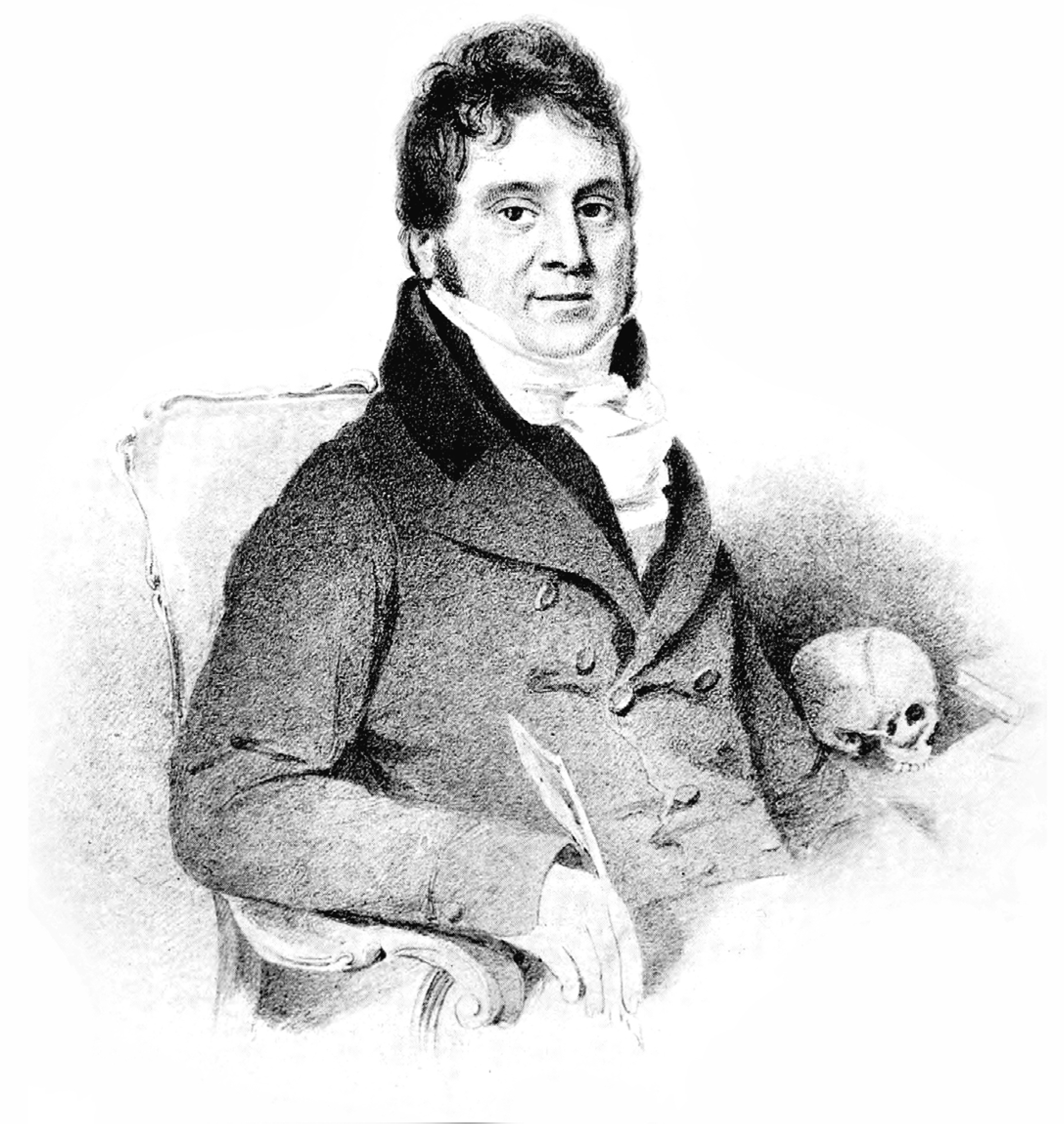Disinformation by Proponents of Perkins’ Patent “Metallick Tractors” (1798–1806) to Sway Public Opinion in Britain in Favor of a Fraudulent Therapy
Abstract
1. Introduction
2. The Perkinist/Anti-Perkinist Conflict
3. Fashioning Converts and Disciples
I address this narrative to the public, and have of course chosen to write it in a popular way, without applying the technical language of the profession, where it was possible to avoid it. It is not to display myseIf that I write, but in the language of simplicity to convey my subject “home to the business and bosoms” of the illiterate and the afflicted, as well to those of the philanthropist, the philosopher, and the physician. I believe a new discovery in the œconomy of nature to have been made, which is as capable of being converted to a happy alleviation of human affliction, as any that has preceded it, and my most ardent, [or] I might say, my only wish, is, that the truth or fallacy of my belief may be ascertained by others. The most effectual way of doing this, that occurs to me, is the submitting my practice to the test of experiment, under the eye of persons capable of detecting the fallacy, if my pretensions are unfounded, and of confirming them, if just. In order to [achieve] this, I propose to operate on all persons afflicted with any of the diseases here enumerated, in the presence of such physicians, surgeons, or others, as may be desirous of witnessing the operation; and I thus publicly invite them to procure such patients for the purpose, as may come within their knowledge. The numerous Hospitals, Infirmaries, Alms-Houses, and other charitable institutions, which grace the populous city of Bristol, must at all seasons, furnish fit subjects for my practice; and I will readily and willingly attend the Directors and Physicians who have the care of them, and make my experiments in their presence.
Although many of the subjects alluded to, or animadverted on were intended to be satirized, others were introduced merely to give them notoriety, or honorable mention in a humorous way; to laugh with rather than to laugh at the inventors, and rather to advertise than to stigmatise their inventions, &c. Persons of this description will perceive our objects, appreciate our motives, and recollect that Dr Caustic [Fessenden’s pseudonym], by virtue of a figure in rhetoric, called irony, can speak one thing and mean another, without uttering falsehood. Dr Caustic, who may be styled the hero of the poem, is represented as a visionary, eccentric, would-be philosopher, endeavoring to effect “grand discoveries and inventions” of most “immense Utility”, but had received so little encouragement that he was impelled by necessity to petition the Royal College of Physicians in London, for relief from penury, and assistance in his projects.
Mr. Perkins presents his compliments to Mr. Gillray, with many thanks, and the enclosed acknowledgement, for the print, which he has seen, with great satisfaction—Mr. G[illray] will please excuse Mr. P[erkins] for not sending specie [money in the form of coins rather than notes], in room of the paper enclosed, as that could not have been conveyed in a letter, and he also asks, as a particular favor, that no person may ever know any communication has taken place between Mr G[illray] and Mr P[erkins] on this subject, and that no Discovery of that nature may be made through the presentation of this Check—will Mr. Perkins be gratified in his wishes to see this print exhibited in other print shops also? He likewise begs to ask what would be charged him for a dozen impressions? Leicester Square Nov 24—1801
4. Paul Graham’s “Disagreement Hierarchy” (DH)
5. Ad Hominem Attacks (DH1)
Here, then, the reader has been presented with the decisions of learned and disinterested men; persons who, before they judged, candidly examined, reflected, and compared. These characters are not of that school where we found the devotees of prejudice and self-interest aiming to deceive the public, by misrepresenting cases, and consequently concealing those facts, which would refute their purposes, and expose their groundless pretensions.
- Since doctor Haygarth, as we’ve stated,
- These points pernicious has prostrated,
- Our college ought to canonize him;
- Instead of that the rogues despise him.
Then, reader, judge whether it is surprising that there should have been produced on the poor victims exposed to his tricks and imposture such powerful operations, and often unfavourable ones, as is acknowledged in [various] cases, where he “caused diseases” instead of removing them; and indeed well nigh did injury to the patients, of which they afterwards with difficulty recovered. And will it not be apparent, that a man who should commit these acts, and so abuse the confidence placed in him by his suffering patients, is more deserving of the habitation of a mad-house, than the guardian of the lives of the sick and afflicted?
If the metallick Tractors can produce instant and visible effects in the presence of an intelligent and impartial observer, medical witnesses will undoubtedly become their firmest and most strenuous friends. The heartfelt joy of giving relief to a suffering patient is the most delightful solace of the innumerable anxieties and fatigues inseparable from the medical profession. I will engage for my brethren that they will reject no remedy of whose salutary efficacy they can obtain clear conviction, from whatever quarter it may come. And if metallick Tractors can produce effects so much superior to all other remedies, the testimony of medical witnesses will be given with candour and alacrity.
There is an erroneous opinion which too generally prevails, that the medical profession is unreasonably prejudiced against quacks. During the last century, though the most enlightened of any since the creation, let us recollect how many quack medicines have annually appeared, and, for a time, have been supposed to perform incredible cures. Of the many myriads which like meteors have shone and vanished, not one in many thousands has stood the test of experience. Yet it is well known, that whenever any of these transitory visions has suggested a single good quality preferable to other known remedies, it has always been carefully preserved as a valuable acquisition to medical science. Such considerations justly make men of discernment cautious in believing any magnificent and interested promises, and ought to preserve the unthinking multitude from the shameful delusion which continues to be practised with astonishing success.
- That a physician should neglect
- To notice e’en a good effect,
- Unless the cause, as he supposes,
- Is nine times plainer than his nose is;
- And though it may be urg’d by some,
- That this grave reasoning’s all a hum,
- Because the learn’d are in the dark
- How opium, mercury, acts, and bark[.]19
6. Responding to Tone (DH2)
Reader, after the Cases before you in this book, I should affront your understanding did I give myself the trouble to prove the palpable falsehood of this audacious declaration.—And now see what measures our author himself acknowledges are necessary to make the poor credulous paupers in the hospital believe themselves immediately and three [sic] remarkably relieved by the false Tractors.
7. Contradiction (DH3)
The objection raised against quack medicines is, that, as they are often composed of powerful ingredients, if not used with judgment, they may do material injury, instead of service. The innocence of the Metallic Practice silences every clamour on this head.
8. Counterargument (DH4): Conspiracy Theories and the “They Persecuted Harvey!” Defense
When first I connected myself with Mr. Perkins, the history of the oppositions which every discovery in natural philosophy, and in the healing art in particular, has ever had to encounter from prejudice and ignorance, afforded me ample proof, that wherever I might commence my practice, it would meet with discouragement from a certain description of professional men; and that I should have difficulties both moral and physical to contend with, which Time only, by enabling Truth to assert its superiority over Falsehood, could overcome. And it has proved as I expected; for, although I have hitherto had little opportunity of promulgating the practice or of procuring patients, some dogmatical pharmacopolists [i.e., apothecary] are already launching against me the arrows of traduction [i.e., defamation, slander], and others, I am informed, who apprehend that their craft will be affected by the discovery, have their quivers full and their bows bent to attack me when time-shall serve.
Every innovation in medicine must meet with opposition; an instance to the contrary has not occurred in medical history. Harvey was persecuted, and attempted to be ridiculed, during most of his life, for asserting the circulation of the blood. The bark,21 opium, mercury, and antimony,22 four of the most valuable medicines in the materia medica have all had their persecution, by the faculty, and have been brought into use only by the unremitted exertions of benevolent and disinterested men; and those generally of the lower orders in society. James’s Powder23 was supported by testimony nearly as respectable as that in favour of the Tractors, and who has not a recollection of the opposition it received, and that a pamphlet was published against that also?
9. Refutation (DH5)
The major part of the cases … are from medical gentlemen of high and distinguished character; some, however, are from persons not of that profession—These must not be regarded as of one whit less importance. They are from men of science, understanding, and probity. It is not required to have spent three years in dissecting the human body, or in learning the use of different drugs, to be competent to give testimony on this subject.—The knowledge, which may authorise us to speak on effect produced by an external application, in topical diseases alone, is very unlike that which would be necessary, where internal remedies are used, in complicated affections. Good eyes, in a character uninfluenced by prejudice, or interest, may give testimony respecting the change observable in an inflammation or a tumefaction, on an application of the Tractors, which is more satisfactory, than all the medical knowledge in the universe, without those requisites.—So evident was this, it could not but be acknowledged, even by medical writers.
The circumstance of the innocence, as well as the efficacy of the remedy, must occasion an indiscriminate circulation of it, in the hands of persons totally unacquainted with the nature of diseases. The Tractors will consequently be tried in a thousand cases for which they are not recommended, and must necessarily often fail, and thereby have discredit attached to them. … Among many also there will never be found patience to give them half a trial. Their apparent simplicity, so much unlike the consequence attached to a pompous display of drugs, often excites disgust and an unwillingness to have them even applied; and here I should notice a most egregious error, which many have imbibed, in consequence of the publication of several cases, where the cures were performed in a few minutes, and by a single operation. Very much to the injury of the Tractors, this has been generally expected, and they have been laid aside when this has not taken place. Whereas it is often necessary, that they be repeated three times a day for many weeks. To this circumstance may be added, the disposition there must ever be, where medical influence prevails, to have recourse to them only as a dernier resort after medicine, and the skill of the [medical] faculty have failed, and when the disease, in consequence, has advanced to such a state, as not to be subdued by human means.
10. Refuting the Central Point (DH6)
- What, though the causes may not be explain’d,
- Since these effects are duly ascertain’d,
- Let not self-interest, prejudice, or pride,
- Induce mankind to set the means aside:
- Means, which, though simple, are by Heaven design’d,
- To alleviate the woes of human kind;
- Life’s darkest scenes with radiant light to cheer,
- Wipe from the cheek of agony the tear.
- That though imagination cures,
- With aid of a pair of patent skewers,
- Still such relief cannot be real,
- For pain itself is all ideal.
- —Christopher Caustic, M.D., A.S.S.
Nay, it shall not be my part to give an opinion of the views of Dr. H[aygarth] … respecting his new discovery, that the imagination can produce effects on the human body. I must not do that violation to reason, as to suppose that the learned Dr. H[aygarth] should not have before had a knowledge of this fact; and indeed that an operation on the mind will and has a thousand times been recorded to produce greater effects than those he has stated. … And here let me ask, why a remedy, which possesses such powers, which is capable of rendering such services, is not adopted? Can there be found, in human form, any base enough to abuse the confidence reposed in him, and, from motives palpably lucrative, prefer consigning a patient to disease and death, rather than adopt an innocent and simple operation on the mind, which would so easily and expeditiously restore him to health. … To believe that the imagination will perform the cures in the innocent manner which thousands have attested are done by the Patent Metallic Tractors, and not to employ the imagination in preference to internal medicines, which at all times, it is admitted, are not administered without some hazard, is a crime which, for the honour of human nature, it is earnestly to be wished, might be chargeable but to [a] few.
[W]hen we next find that Dr. H[aygarth] and his adherents, whose duty it is to cure diseases in the most safe, cheap, and expeditious manner anathematize the tractors, because they cure diseases (as they pretend to suppose) by an operation on the imagination (a pleasant remedy!)—when they exclaim against the tractors, and assert that no confidence is to be placed in their effects, because the modus operandi is not explained and demonstrated, like a mathematical problem, although the modus operandi of the best and most approved medicines in the materia medica is even more inexplicable—when we find it objected to the tractors, that the testimony of those who support the discovery is not admissible, nor satisfactory, although such testimony is, in every sense, preferable to that on the other side of the question, inasmuch as it is from learned and disinterested men, many of them medical characters, retired on their fortunes from business—it is difficult to show the ridiculous conduct of the part opposed to Perkinism….
A gentleman came from the country to London for the advantage of medical assistance, in a complaint of peculiar obstinacy and distress. After being under the care of an eminent physician several weeks, and paying him upwards of thirty guineas, without any relief, he was induced to try the tractors. To be short, they performed a remarkable cure; the person was perfectly restored in about ten days. The physician, calling soon after, was informed of the circumstance. He began lamenting that so sensible a person as the patient should be caught in the use of so contemptible a piece of quackery as the tractors. After assuring the patient that he had thrown away his five guineas [for treatment with the tractors], for that it was well established by Dr. Haygarth, that a brick-bat, tobacco-pipe, goose-quill, or even the bare finger, would perform the same cures, he was interrupted by his patient: ‘And are you sincere in your belief that you could have produced, by those means, the same effects upon me, which I have experienced from the tractors?’ ‘Do I believe it?’ Ay, I know it; and that a thousand similar cures might be effected by means equally simple and ridiculous.’— ‘And sir,’ interrupted the gentleman again, in a more stern and serious tone, ‘why did you not cure me then by those simple means? Remember I have paid you thirty guineas, under the supposition that you were exerting your utmost endeavours to cure me, and that in the most safe, cheap, and expeditious manner. You now in substance acknowledge, that, although in possession of the means of restoring me to health, for the dishonourable purpose of picking my pocket, you continued me upon the bed of sickness! Who turns out to be the imposture? Let your own conscience answer.
- What though they say, why to be sure,
- If we by Fancy’s aid can CURE,
- Then why not use imagination,
- A cheap and simple operation? …
- Say nature through her works intends
- All things to answer some great ends:
- thus she form’d drugs to purge and shake,
- Then man, of course those drugs to take.
- That learn’d physicians pine with hunger,
- The while a spruce young patent-monger
- Contrives to wheedle simple ninnies,
- And tractorize away our guineas.
[These various experiments] prove … that the Imagination can cause, as well as cure, diseases of the body. They clearly establish one rule of medical practice which has always appeared to me highly important. In the best manner possible a patient ought to be always inspired with confidence in any remedy which is administered. … These trials … clearly prove what wonderful effects the passions of hope and faith, excited by mere Imagination, can produce upon diseases. On this principle we may account for the marvelous recoveries frequently ascribed to empirical remedies, which are commonly inert drugs, and generally applied by the ignorant patient in disorders totally different from what the quack himself pretends that they can cure. Magnificent and unqualified promises inspire weak minds with implicit confidence.
11. The End of the Fad: Ridicule and Reflection
The justly far-famed and highly celebrated Dr. von31 Isaac Slaukenbergius, High German, Hebrew Doctor; Seventh son of a seventh son,32 unborn Doctor,33 educated at twelve universities, and who has travelled through fifty-three kingdoms, and been counsellor to counsellors of several monarchs; takes this public method of announcing his arrival at the present period of the celebration of that renowned gala, the Guild at Preston.34 The Doctor submits to a discerning public the following cursory statement of a few of those rare medical secrets, which he has discovered, in consequence of his great pains, long travels, and nocturnal lucubrations [i.e., studies]. … His Sympathetic Tractors, or Metallic Conundrum.—The Doctor justly claims to himself the invention of metallic tractors, while he resided at the court of the monarch of Pegu [in Burma, now Bago, Myanmar].35 The King had unfortunately swallowed a knife, which the ignorant physicians of his court intended to dissolve by aqua fortis [i.e., nitric acid]. Stuck with the horror at the injury likely to arise to the coats of his Majesty’s stomach, from this highly corrosive fluid, the Doctor invented a sympathetic tractor, of such energetic powers, that, by gently drawing it along the surface of the body, it attracted the dangerous weapon, to where it might be safely and expeditiously extracted; which operation was performed to the no small joy and surprise of his Majesty and all the Royal Family! This wonderful experiment laid the foundation for many others, which have demonstrated (at the moderate price of only five guineas) the sympathetic attraction subsisting between metals and maladies; and likewise the transmutation (by a new kind of alchemy) of the baser into more precious metals.
A gentleman was scalded, and he used Perkin’s tractors; he got well, and recommended the tractors in all cases. Was he capable of judging? … Dr. Warwick, to convince him of their inutility, allowed both [of] his hands to be scalded; the one was tractorised, and other done nothing to; the pain of each was equal, and they went through the curative process in the same time. To please the patient or practitioner in the cure of a disease may be delusive, but to know that you have been instrumental in aiding Nature, requires a knowledge of her law in that disease, and to know what she would have done without your assistance. When the comparative effects of different treatment in the same disease are fairly made, we may surely then expect to arrive at the first principles on which the treatment of such diseases ought to be conducted.
The credit for this invention is due to America; it must be admitted that the inventor [of the tractors] has the honour of having levied a heavier tax upon credulity than any of his predecessors ever dared attempt. … Many cures have certainly been performed by them, and how those cures are performed has been as certainly exemplified by some very ingenious experiments which were made at Bath and Bristol. Pieces of wood, and others of common iron, shaped and coloured like the tractors, were tried there upon, some paralytic patients in the Infirmary. The mode of operating consists in nothing more than in gently stroking the part affected with the point of the instrument, and so, according to the theory, conducting off into the atmosphere the galvanic matter of pain! It is impossible that where there is no sore this can give any pain whatever, yet the patients were in agonies. One of them declared that he had suffered less when pieces of the bone of his leg had been cut out,—and they were actually enabled to move limbs which before were dead with palsy.—False relics have wrought true miracles.
- Thus saith the Preacher: “Nought beneath the sun
- Is new”, yet still from change to change we run.
- What varied wonders tempt us as they pass!
- The Cow-pox, Tractors, Galvanism, and Gas,
- In turns appear, to make the vulgar stare,
- Till the swoln bubble bursts—and all is air!
12. Discussion
13. Comparison with the Earlier Controversy over Mesmerism
Mesmer continues here and has still some Adherents and some Practice. It is surprising how much credulity still subsists in the World. I suppose all the Physicians in France put together have not made so much money, during the Time he has been here, as he alone has done!(Franklin 1818, p. 159; also quoted with a few discrepancies in Duveen and Klickstein 1955, p. 301; Pattie 1994, p. 229).
14. Comparison with a Modern Controversy over an “Elaborate Placebo”: Acupuncture
15. Conclusions
Funding
Conflicts of Interest
| 1 | Dr. Elisha Perkins Sr. was born on 6 January 1741, in Norwich, New London, Connecticut Colony, British Colonial America to Joseph Perkins Jr. (1704–1794) and Mary Bushnell (1707–1795). His father, his older brother Joseph (1733–1775) of Lisbon, Connecticut Colony, and his maternal grandfather, Caleb Bushnell (1679–1723/1724) of Norwich, Connecticut Colony, were all physicians (Perkins 1860; Caulkins 1874). He married Sarah Douglas (1744–1795) on 23 September 1762, in Plainfield, Windham, Connecticut Colony, British Colonial America. They were the parents of at least eight sons and five daughters. Perkins served as a surgeon for the Continental Army during the Battle of Bunker Hill in the Siege of Boston during the American Revolution. Perkins was an orthodox physician until around 1795, when he shifted to promoting a quack therapy of his own invention (“metallick Tractors”) as a panacea. In 1798, after the fad for the tractors faded in the United States, Perkins claimed to have discovered a cure for yellow fever that combined his tractors with administration of an antiseptic, consisting of vinegar (acetic acid) with muriate of soda (i.e., sodium chloride or common salt). Perkins touted his yellow fever “cure” in New York City during an outbreak in 1799, but unsurprisingly, his treatment had no effect; instead, Perkins himself contracted yellow fever and died, despite his “cure”, on 6 September 1799, in Manhattan, New York, at age 58. |
| 2 | A testimonial is a person’s written or spoken statement extolling the virtue of a product. The term “testimonial” applies to the sales-pitches targeted to ordinary citizens, whereas “endorsement” usually applies to pitches by celebrities, i.e., individuals with broad name recognition who are assumed to be knowledgeable and trustworthy authorities. Quacks also recognized the value of “plain folks” testimonials, i.e., using regular people to advertise a product, because this demonstrates that regular people use and value the treatment and encourages them to use their limited means to obtain such a valuable commodity. |
| 3 | Benjamin Douglas Perkins was born on 24 June 1774, in Plainfield, Windham, Connecticut Colony, British Colonial America to Dr. Elisha Perkins Sr. (1741–1799) and Sarah Douglas (1744–1795). He had at least three sons and one daughter with Mary Lindley Murray (b. 1784). He was a charlatan, responsible for bringing Perkins’ tractors to Great Britain in 1798, after the fad for their use had waned in the United States. He was only about 24 years old when he went to Britain, but within six years amassed a huge fortune. He returned to the United States in 1803 and died in New York City seven years later, on 13 October 1810, at age 36. |
| 4 | “Our ancestors were a nostrum-loving race from the king to the cottager, and the history of panaceas and specifics, in the form of elixirs, pills, powders, and waters, would form a large volume of humiliating memorials, of the credulity of the public who could swallow them, and the infatuation of the physician who could prescribe them” (Wadd 1827, pp. 151–52). |
| 5 | The guinea was the first English machine-struck gold coin, minted in Great Britain between 1663 and 1814. It contained approximately one-quarter of an ounce of gold, originally representing a value of 20 shillings in sterling specie, equal to one pound, but its value initially fluctuated with changes in the price of gold relative to silver. From 1717 to 1816, which includes the entire Perkinean era, its value was officially fixed at twenty-one shillings or GBP 1.05 (Hooker 1850, p. 18). Estimates of the cost in current pounds and dollars of a pair of tractors are based on annual estimates of the composite price index for Great Britain from the UK Office of National Statistics from 1803 to 1987, and the Office of National Statistics Consumer Price Index from 1988 to 2023. Source: Webster, Ian. UK Inflation Calculator. https://www.officialdata.org/UK-inflation (accessed 31 December 2023). |
| 6 | Two previous articles addressed the early history of Perkins’ Tractors in the United States and the controlled trials by John Haygarth and colleagues in Great Britain (Lanska 2019a, 2019b). |
| 7 | Latin for “to the man” or “to the person”, and meaning attacking the arguer rather than the argument. |
| 8 | Black propaganda seeks to create the impression that it was created by those it is supposed to discredit. |
| 9 | Apart from his involvement with Perkins, Langworthy is most notable as the proprietor of a notorious mental asylum at Kingsdown House in Box, England, about six miles from Bath. Langworthy began admitting patients there in 1798, the same year he became an agent for Perkins and took up the “Metallic Practice” in conjunction with his surgical practice. Langworthy ran this solely as an additional source of income without regard for the quality of life of the mentally ill patients admitted there (Select Committee of the House of Commons, on Madhouses in England 1815a, p. 21; 1815b, pp. 297–98; Metropolitan Commissioners in Lunacy 1844, pp. 46, 60, 67, 139, 288). For example, Edward Wakefield (1774–1854), a philanthropic reformer who combined his travels as a land agent with the inspection of madhouses, visited Langworthy’s madhouse on 28 September 1814 and gave a clear account of the atrocious conditions in which the patients were kept. On 3 May 1815, he testified to the House of Commons Committee on Madhouses in England that, at Langworthy’s House, there were forty patients and nine servants. He did not see the men because it was a day when they were not allowed up, but he did see two women who were nearly naked on straw in a cellar and heard others confined in a completely dark room. When Wakefield inquired whether blanket gowns were used with the patients, Langworthy reported that in winter he “sowed them up in a blanket” (Select Committee of the House of Commons, on Madhouses in England 1815a, p. 21; 1815b, p. 298). Wakefield concluded that, “I think in the course of my visiting these places I never recollect to have seen … living persons in so wretched a place” (Select Committee of the House of Commons, on Madhouses in England 1815a, p. 21; 1815b, p. 297). Conditions there did not improve over time with Langworthy’s continued proprietorship. With formal inspections in 1842 and 1844 (when there were 137 patients), the Metropolitan Commissioners in Lunacy and visiting justices found that restraint use had been “improper and unjustifiable”, “excessive and highly censurable”, and “harsh and cruel”, with patients observed in strait waistcoats, iron frames, hand-locks, leg-locks, and chains (Metropolitan Commissioners in Lunacy 1844, pp. 60, 67, 139, 288). The Commissioners found Langworthy’s madhouse “unfit for the proper care of the insane” and considered it one of eleven asylums and licensed madhouses that “deserve almost unqualified censure” (Metropolitan Commissioners in Lunacy 1844, pp. 46, 139). |
| 10 | A type of comic narrative poetry consisting of eight-syllable rhyming couplets. It is named after English author Samuel Butler’s (1835–1902) satirical poem Hudibras (published in three parts in 1663, 1664 and 1678), which used deliberately absurd, iambic tetrameter couplets to ridicule and attack the Puritans. |
| 11 | Among his other satirical works was the alliteratively titled, Pills, Poetical, Political, and Philosophical, Prescribed for the Purpose of Purging the Public of Piddling Philosophers, Penny Poetasters, of Paltry Politicians, and Petty Partisans, by Peter Pepperbox, Poet and Physician (1809). |
| 12 | Phial—a glass vessel or bottle, especially a small bottle for medicines. Sconces—heads or skulls. |
| 13 | This foreshadowed the dubious 20th-century notion that “There is no such thing as bad publicity.” While this expression is often attributed to 19th-century American showman and circus promoter P.T. Barnum (1810–1891), no documentary evidence exists to support this. The expression appears to have been introduced in the early 20th century under the influence of Edward Louis Bernays (1891–1995), an American pioneer in public relations and propaganda. Among his best-known campaigns was a 1929 effort to promote female smoking by branding cigarettes as feminist “Torches of Freedom.” His books Crystallizing Public Opinion (1923) and Propaganda (1928) were important early efforts to define and theorize the field of public relations. |
| 14 | The Whole Duty of Man was an English high church devotional work, first published anonymously in 1658, that was popular and influential for two centuries in the Anglican tradition. |
| 15 | Eloise de Montblanc was a four-volume novel written by an anonymous author and published in 1796. |
| 16 | Paul Graham, Ph.D., is an English-born computer scientist, programmer, essayist, entrepreneur, and venture capitalist, with dual British and American citizenship. He has been dubbed “the hacker philosopher” (Levy 2017). His classic 2008 essay on “How to disagree” outlined a seven-point disagreement hierarchy that has found widespread application (Graham 2008). |
| 17 | Estimates of the cost in current pounds and dollars of a guinea are based on annual estimates of the composite price index for Great Britain from the UK Office of National Statistics from 1803 to 1987, and the Office of National Statistics Consumer Price Index from 1988 to 2023. Source: Webster, Ian. UK Inflation Calculator. https://www.officialdata.org/UK-inflation (accessed 31 December 2023). |
| 18 | Quid non mortalia pectora cogis, Auri sacra fames? (Frieze 1877, p. 52, lines 56–57). This is from book III of the Aeneid, a Latin epic poem written by Virgil (70 BCE–19 BCE) between 29 and 19 BCE. See also Graham (1957). Here are two versions of that quotation from the Aeneid translated into English verse: (1) “O sacred hunger of pernicious gold!/What bands of faith can impious lucre hold?” (Dryden 1819, pp. 3–4); (2) Dire lust of gold! how mighty thy controll/To bend to crime man’s impotence of soul! (Symmons 1820, p. 154). |
| 19 | “Bark” refers to the bark of Cinchona, a genus of flowering plants native to the tropical Andean forests of western South America. Trees in the genus were known as “fever trees” because of the antimalarial properties of preparations of their bark (due to their content of quinine). This were the only effective treatment against malaria until the mid-20th century, when the artificial synthesis of quinine (1944), an increase in quinine-resistant malaria, and the emergence of alternate therapies ended large-scale interest in Cinchona cultivation. |
| 20 | A straw-man fallacy occurs when someone distorts or exaggerates another person’s argument, and then attacks the distorted version of the argument. |
| 21 | The bark of white willow contains salicin, which is a chemical similar to aspirin (acetylsalicylic acid). |
| 22 | A toxic purgative, considered by some early modern physicians as a nearly miraculous panacea and revered by alchemists for its ability to purify gold. |
| 23 | English physician Robert James (1703–1776) invented a popular “fever powder”, which he patented in 1747 (James 1778; Warbasse 1907; Stine 1941; Brack and Kaminski 1984). James’ fever powder was one of the most successful 18th-century patent medicines, taken to combat fevers and as a general tonic, although James “tarnished his image by patenting his powders, and falsifying their specification” (Munk 1878b, p. 269). James’ falsification of the ingredients in the patent documentation was designed to prevent others from replicating his formulation. He was also accused of having stolen the formula from a German chemist (Baker 1754). James’ fever powder contained phosphate of lime (i.e., tricalcium phosphate) and antimony oxide to aid sweating. |
| 24 | The opposition to medical innovations, even those ultimately accepted as valuable, can be quite traumatic for innovators. A well-known example is the experience of Hungarian physician and scientist Ignaz Semmelweis (1818–1865), an early pioneer of antiseptic procedures to prevent childbed fever (an often-fatal postpartum bacterial infection of the reproductive tract caused by unsanitary obstetric practices in the 19th century). Semmelweis’s empiric observations that hand washing with chlorinated lime solutions decreased maternal mortality from 18% to 2% on physician-run obstetric wards conflicted with established scientific and medical opinions, lacked a theoretical foundation, and offended his colleagues, who then rejected and ridiculed Semmelweis. In 1865, the increasingly outspoken Semmelweis suffered a nervous breakdown and was committed to an asylum where he was beaten by the guards; he died two weeks later from a gangrenous wound on his right hand likely caused by the beating. His findings earned widespread acceptance years after his death, when Louis Pasteur (1822–1895) confirmed the germ theory and provided a theoretical explanation for Semmelweis’ observations. |
| 25 | “There is a kind of magic or sorcery, or what else you may please to call it, which, though unknown to us, is yet, it seems, still very much encouraged by the Devil; but this is a great way off, and in countries where the politer instruments which he finds here are not to be bad, namely, among the Indians of North-America. This is called paw-wawing; and they have their divines, who they call paw-waws, or wizards, who use strange gestures, distortions, horrid smokes, burnings and scents, and several such things, which the sorcerers in ancient times are said to have used in casting nativities, in philtres [i.e., a love potion], and in determining, or, as they pretended, directing the fate of persons,—by burning such and such herbs and roots, such as hellebore, wormwood, storax [a plant resin], devil-wort, mandrake, night-shade, and abundance more such, which are called noxious plants, or the product of noxious plants; also melting such and such minerals, gums, and poisonous things, and by several hellish mutterings and markings over them” (Defoe 1777). |
| 26 | “Card-stacking” advertising or propaganda intentionally accentuates one point or perspective while downplaying the others to create a blind spot. It prioritizes positive information supporting the product over negative information. |
| 27 | Based on annual estimates of the composite price index for Great Britain from the UK Office of National Statistics from 1803 to 1987, and the Office of National Statistics Consumer Price Index from 1988 to 2023. Source: Webster, Ian. UK Inflation Calculator. https://www.officialdata.org/UK-inflation [Accessed 31 December 2023]. During this time, “Metallic Tractors” and “Perkins’s Metallic Tractors” were considered a “medicine” and as such were subject to stamp duties by the British government (Tomlins 1807, p. 207; Burn et al. 1810, p. 173). |
| 28 | There are multiple forms of fake news, including fabricated content, manipulated content (i.e., when genuine information is manipulated to deceive), and imposter content (with fabricated sources). |
| 29 | Fessenden presented the middle quatrain in all upper case. This was changed to sentence case to improve readability. |
| 30 | During the 1802 Preston Guild, “There was a grand masquerade, ball and banquet, tickets one guinea each, held in the large Guild-rooms, where many truly original, singular, odd, grotesque, and curious characters were personated by some of the first families of rank, with considerable ability” (Tuket 1822a, p. 327; 1822b, p. 407). |
| 31 | The “von” in this contrived Germanic-sounding name is intentionally misplaced. The “von” in some German and Austrian personal names was originally used to indicate place of origin and later to indicate nobility, but was always placed between the given name and the surname, not preceding the given name. |
| 32 | The seventh son of a seventh son is a belief from folklore that special powers are given to, or held by, such a son: To qualify, one must be the seventh male child born in an unbroken line with no intervening female siblings and have a father who himself is the seventh male child born in an unbroken line with no intervening female siblings. |
| 33 | Some quacks of the late 17th, 18th, and early 19th centuries advertised the particulars of their supposed cures by claiming to be the “seventh son of a seventh son”, an “unborn doctor”, or both (Anonymous 1690?; Unborn Doctor, Seventh Son of the Seventh Son [pseudonym] 1690?; Anonymous 1873; Brewer 1910). An article attributed to English essayist, poet, playwright, and politician Joseph Addison (1672–1719) in The Tatler, on 21 October 1710, reported that “There are some who have gained themselves great reputation for Physic by their birth, as the “seventh son of a seventh son;” and others by not being born at all, as the unborn doctor, who, I hear, is lately gone the way of his patients” (Addison [1710] 1789, pp. 367–68); a footnote identifies the surname of the “unborn DOCTOR” as Kirleus: “Dr. Kirleus had probably a brisk trade and advanced prices in consideration of his being unborn” (Addison [1710] 1789, p. 368). An 18th-century quack who worked the Moorfields (i.e., a marshy open space adjacent to and outside the northern city wall of London) advertised himself as the “Unborn Doctor”, but others of the time labeled him the “stuttering Unborn Doctor”: when asked to explain his title, he replied, “Why, you s-s see sir, I w-was not b born a d-d-doctor, and s-s-so I am an u-u-u unborn doctor” (Anonymous 1873; Brewer 1910, p. 889). The etching “The Compleat Auctioner” (circa 1700) shows a bespectacled bookseller displaying a “Choice Collection” from the library of “the late famous Unborn Doctor”, containing pornographic titles and a work on syphilis, looked upon credulously by a gentleman and a commoner with two ladies looking at a distance; a notice attached to the branches of the tree announces a book auction the same day in the “Northwest Corner of Middle Moorfields” (Anonymous 1700). An 18th-century engraving of three dwarf quacks, “Glysterpipe Fillpacket, Peregrino Mountebanko and Timothy Mouth: three itinerant medicine vendors selling their wares” includes an image of “Peregrino Mountebanko the unborn Doctor”, who proclaims: “I cure the itch, the gout, the stitch, the mulligrubs, the pox: great belly’d maids, old founder’d jades, and all Pandora’s box” (mulligrubs is a despondent, sullen, or ill-tempered mood, while “the stitch” refers to a sudden sharp pain in the side of the body, usually brought on by strenuous exercise) (Anonymous 1700–1799). The “Unborn Doctor” sobriquet was not limited to quacks, however. For example, the bigamist, conman, and fraudster John Payden (alias Thomas Lock) stood trial for bigamy in 1699 after having married two women and having reportedly tried to marry several other rich women using false identities (Anonymous 1699; Hug 2006, 2010): one witness reported that “he hath been called in this City by the Name of the Never-born or (Unborn) Doctor; and the Seventh Son of a Seventh Son” (Anonymous 1699). |
| 34 | Guild celebrations in Preston first came about in 1179 after King Henry II (1133–1189) granted the town its first royal charter. The purpose of the Guild was to license traders, craftsmen, and merchants so that only Guild members (or burgesses) were allowed to operate in the town. Gatherings for renewing Guild membership were infrequent, and from 1542 onward, the Preston Guild took place every 20 years. Large numbers of people congregated in Preston for these special occasions, making “the Guild” an opportunity for feasting, processions, and great social gatherings. As of 1790, there was freedom of trade in Preston, which abolished the need for a Guild, but Guild festivities continued as they had developed into prestigious social occasions. During “the Guild”, the Guild Mayor presided over lavish entertainment, including masquerade balls and the great Mayoral banquet. |
| 35 | Pegu, Burma, was an archaic name for Bago, Myanmar. Until the Burmese government renamed English place names throughout the country in 1989, Bago was known as Pegu. |
| 36 | In Roman mythology, Sylvanus was the god of woods and fields and flocks; Pan is the Greek counterpart. Urban Sylvanus was originally the pseudonym of English printer, editor, and publisher Edward Cave (1691–1754), the founder of The Gentleman’s Magazine in 1731. He coined the term “magazine” for a periodical and was the first publisher to successfully fashion a wide-ranging publication. Subsequent editors of The Gentleman’s Magazine all used the same pseudonym. John Nichols was the third editor from 1792 until his death in 1826 (Hart 1962). |
| 37 | The first edition in 1809 was published anonymously and had no reference to Perkins’ tractors. The reference to Perkins’ tractors came in the second (not anonymous) edition, also in 1809. |
| 38 | Although tomatoes were introduced to Europe from South America in the 16th century, they were not cultivated in North America even through the 18th century, because they belong to the nightshade family and were presumed to be poisonous. This historical curiosity explains the derivation of the so-called “tomato effect” as applied to medical therapies (Goodwin and Goodwin 1984). |
| 39 | Jan Ingenhousz is best known for his discovery of the process of photosynthesis. |
References
- Abram, William Alexander. 1882. The Guild Merchant of 1802. In Memorials of the Preston Guilds, Illustrating the Manner in Which the Guild Merchant Has Been Held in the Borough from the Earliest on Record until the Last Guild in 1862. Collected from the Guild Rolls, Order Books, Council Books, and Other Records of the Preston Corporation and from Private Manuscripts, Scarce Printed Tracts, and Other Original Sources. With Full English Abstracts of All the Royal Charters Granted to Preston Personal and Genealogical Notes on Many of the Guild Mayors and Their Families, &c. Preston: George Toulmin, pp. 108–19. [Google Scholar]
- Addison, Joseph. 1789. The Tatler. London: H. Goldney, vol. 4, pp. 365–75. First published 1710. [Google Scholar]
- Alderson, John. 1800. Dr. Alderson’s account of the efficacy of Tractors. The Medical and Physical Journal 4: 100–2. [Google Scholar] [PubMed]
- Alvarez Espriella, Don Maneul. 1807. Letters from England, 1st ed. Translated by the Spanish [sic]. Boston: Munroe & Francis, p. 233. [Google Scholar]
- Anonymous. 1690. These Are to Give Notice To All Persons, That There Is Newly Arrived at London, from Beyond Seas, An Unborn Doctor, the Seventh Son of A Seventh Son: Who (by God’s Blessing on His Studies) and More than 27 Years Travels with Most Famous and Eminent Physicians. London: s.n. [Google Scholar]
- Anonymous. 1699. The Proceedings of the Old Bailey. Reference Number 16991213. December 13. Available online: https://www.oldbaileyonline.org/record/16991213 (accessed on 4 January 2024).
- Anonymous. 1700. The Compleat Auctioner. London: The British Museum. Available online: https://www.britishmuseum.org/collection/object/P_1851-0308-20 (accessed on 4 January 2024).
- Anonymous. 1700–1799. Glysterpipe Fillpacket, Peregrino Mountebanko and Timothy Mouth: Three Dwarfs as Itinerant Medicine Vendors Selling Their Wares. Engraving. London: Wellcome Collection. Available online: https://wellcomecollection.org/works/h2bdwtzb (accessed on 4 January 2024).
- Anonymous. 1798. Account of Dr. PERKINS’s Discovery of the Influence of Metallic Tractors, in removing many of Diseases of the Human Body. Philosophical Magazine 1: 250–55. [Google Scholar] [CrossRef]
- Anonymous. 1800. Review of New Publications: Of the Imagination, as a Cause and as a Cure of Disorders of the Body exemplified by fictitious Tractors, and epidemical Convulsions. Read to the Literary and Philosophical Society of Bath. By John Haygarth, M.D., F.R.S. London and Edinburgh, of the Medical Society of Edinburgh and the American Academy of Arts and Sciences. Gentleman’s Magazine 70: 253. [Google Scholar]
- Anonymous. 1801a. Review of Experiments with the Metallic Tractors: In Rheumatic and Gouty Affections, Inflammations, and various Topical Diseases; as published by Surgeons Herholdt and Rafn, of the Royal Academy of Sciences, Copenhagen. The Monthly Review; or Literary Journal 35: 418–22. [Google Scholar]
- Anonymous. 1801b. Review of The Efficacy of Perkins’s Metallic Tractors, in Topical Diseases, on the Human Body and Animals. The Monthly Review; or Literary Journal 35: 423–24. [Google Scholar]
- Anonymous. 1802. On the imagination. In Bibliothèque britannique; ou Recueil extrait des ouvrages anglais périodiques et autres; des Mémoires et Transactions des Sociétés et Académies de Grande-Bretagne, d’Asie, d’Afrique et d’Amérique; en Deux Séries, intiulées: Littérature et Sciences et arts; rédigé a Genève, Par une Société de Gens de Lettres. Genève: La Bibliothèque Britannique, vol. 21, pp. 49–89. [Google Scholar]
- Anonymous. 1807. Art. III. Willan and others on vaccination. Review of articles opposing vaccination with cowpox. The Edinburgh Review, or Critical Journal 9: 32–66. [Google Scholar]
- Anonymous. 1824. William Falconer, M.D. [obituary]. The Gentleman’s Magazine 94: 374–75. [Google Scholar]
- Anonymous. 1873. Quacks of the eighteenth century. The College Courant 12: 76–77. [Google Scholar]
- Baker, Walter. 1754. The Affidavits and Proceedings of Walter Baker, Administrator to the Late Baron Schwanberg, upon His Petition Presented to the King in Council, to Vacate the Patent Obtained by Dr. Robert James for Schwanberg’s Powder, for Curing Acute and Inflammatory Fevers, &c and Also His Aurum Horizontale Pill, for Curing and Relieving Chronic Cases, Both Invented and Published many Years before the Said Dr. James Obtained the Said Letters Patent: With a Copy of the Report, upon Hearing before the Attorney and Soliciter General, the Sixth of December, 1752: Also the Masked Specification of Dr. Robert James, Inrolled in Chancery; and a True Copy of His Extraordinary Affidavit, Sworn the Same Day of the Hearing; Now Lying in the Office of His Majesty’s Most Hon’ble Privy Council: For Which a Bill of Indictment for Perjury has been Preferred, and Found against the Said Dr. Robert James, at a Quarter Sessions of Oyer and Terminer, at Hicks’s-Hall,. In Feb. 1753, but since Removed by Certiorari into the Court of King’s Bench, at Westminster, There It Is Now Depending to Be Tried, Assoon as the Said Original Affidavit Can Be Procured Out of the Said Office. London: s.n. [Google Scholar]
- Bardsley, [Samuel Argent]. 1802. Dr. Von Isaac Slaukenbergius. The Sporting Magazine; or Monthly Calendar of the Transactions of the Turf the Chace and every other Diversion Interesting to the Man of Pleasure. Enterprize & Spirit 20: 293–95. [Google Scholar]
- Bardsley, [Samuel Argent]. 1803. Whimsical Hand-Bill distributed at the Preston Masquerade, by Dr. Bardsley, of Manchester, in the character of a quack doctor. In Spirit of the Public Journals for 1802. Being an Impartial Selection of the Most Exquisite Essays and Jeux d’Espirits, Principally Prose, That Appear in the Newspapers and Other Publications. With Explanatory Notes and Anecdotes of Many of the Persons Alluded to. London: James Ridgway, vol. 6, pp. 352–54. [Google Scholar]
- Barnes, Ralph M., Heather M. Johnston, Noah MacKenzie, Stephanie J. Tobin, and Chelsea M. Taglang. 2018. The effect of ad hominem attacks on the evaluation of claims promoted by scientists. PLoS ONE 13: e0192025. [Google Scholar] [CrossRef]
- Bellamy, Jann. 2012. Acupuncture Practice Acts: Legalized Quackery. Science-Based Medicine. Available online: https://sciencebasedmedicine.org/acupuncture-practice-acts-legalized-quackery/ (accessed on 26 January 2019).
- Bellamy, Jann. 2013. Legislative Alchemy: Acupuncture and Homeopathy 2013. Science-Based Medicine. Available online: https://sciencebasedmedicine.org/legislative-alchemy-acupuncture-and-homeopathy-2013/ (accessed on 26 January 2019).
- Berman, Brian M., Helene M. Langevin, Claudia M. Witt, and Ronald Dubner. 2010. Acupuncture for chronic low back pain. New England Journal of Medicine 363: 454–61, Erratum in New England Journal of Medicine 363: 893. [Google Scholar] [CrossRef]
- Booth, Christopher C. 2005. John Haygarth, FRS, 1740–1827: A Physician of the Enlightenment. Philadephia: American Philosophical Society. [Google Scholar]
- Brack, O. M., Jr., and Thomas Kaminski. 1984. Johnson, James, and the “Medical Dictionary.”. Modern Philology 81: 378–400. [Google Scholar] [CrossRef] [PubMed]
- Bramstedt, Katrina A. 2021. Unicorn Poo and Blessed Waters: COVID-19 Quackery and FDA Warning Letters. Therapeutic Innovation & Regulatory Science 55: 239–244. [Google Scholar]
- Brewer, Ebenezer Cobham. 1910. The Reader’s Handbook of Famous Names in Fiction, Allusions, References, Proverbs, Plots, Stories, and Poems. Philadelphia: J.B. Lippincott Company, p. 888. [Google Scholar]
- Brinkhaus, Benno, Claudia M. Witt, Susanne Jena, Klaus Linde, Andrea Streng, Stefan Wagenpfeil, Dominik Irnich, Heinz-Ulrich Walther, Dieter Melchart, and Stefan N. Willich. 2006. Acupuncture in patients with chronic low back pain: A randomized controlled trial. Archives of Internal Medicine 166: 450–457. [Google Scholar] [CrossRef] [PubMed]
- Burn, Richard, Charles Durnford, and John King. 1810. The Justice of the Peace, and Parish Officer, 21st ed. London: A. Strahan, vol. 3, p. 173. [Google Scholar]
- Byron, Lord. 1809a. English Bards, and Scotch Reviewers. A Satire, 1st ed. [published anonymously]. London: James Cawthorne. [Google Scholar]
- Byron, Lord. 1809b. English Bards, and Scotch Reviewers; A Satire, 2nd ed. with considerable additions and alterations. London: James Cawthorne, pp. 9–10. [Google Scholar]
- Caulkins, Frances Manwaring. 1874. History of Norwich, Connecticut: From Its Possession by the Indians to the Year 1866. Hartford: Case, Lockwood, and Brainard. [Google Scholar]
- Cherkin, Daniel C., Karen J. Sherman, Andrew L. Avins, Janet H. Erro, Laura Ichikawa, William E. Barlow, Kristin Delaney, Rene Hawkes, Luisa Hamilton, Alice Pressman, and et al. 2009. A randomized trial comparing acupuncture, simulated acupuncture, and usual care for chronic low back pain. Archives of Internal Medicine 169: 858–66. [Google Scholar] [CrossRef]
- Corry, John. 1802. The Detector of Quackery; or, Analyser of Medical, Philosophical, Political, Dramatic, and Literary Imposture. Comprehending a Sketch of the Manners of the Age, 2nd ed. London: T. Davison, pp. 33–40. [Google Scholar]
- Corry, John. 1807. Quack Doctors Dissected, or, a New, Cheap, and Improved Edition of Corry’s Detector of Quackery: Containing Several Curious Anecdotes of Solomon, Brodum, Perkins, and Other Modern Empirics, with Strictures on Book-Makers, & Puffing Publishers. London: Champante and Whitrow. [Google Scholar]
- Crislip, Mark. 2010. NEJM and Acupuncture: Even the Best Can Publish Nonsense. Science-Based Medicine. Available online: https://sciencebasedmedicine.org/nejm-and-acupuncture-even-the-best-can-publish-nonsense/ (accessed on 26 January 2019).
- d’Eslon, Charles. 1780. Observations sur le Magnétisme Animal. London: Didot. [Google Scholar]
- Darnton, Robert. 1968. Mesmerism and the End of the Enlightenment in France. Cambridge: Harvard University Press. [Google Scholar]
- Defoe, Daniel. 1777. The History of the Devil: Ancient and Modern: In Two Parts, with a Description of the Devil’s Dwelling. London: G. Hay, p. 321. [Google Scholar]
- Dryden, John. 1819. Æneïs: Book III. In The Works of Virgil, Translated into English Verse, by John Dryden. Edited by John Carey. London: J. Cuthell, vol. 2, pp. 3–4, lines 80–81. [Google Scholar]
- Duveen, Dennis I., and Herbert S. Klickstein. 1955. Benjamin Franklin (1706–1790) and Antoine Laurent Lavoisier (1743–1794). Part II. Joint investigations. Annals of Science 11: 271–302. [Google Scholar] [CrossRef]
- Fessenden, Thomas Green. 1803. Terrible Tractoration!! A Poetical Petition Against Galvanising Trumpery, and the Perkinistic Institution: In Four Cantos: Most Respectfully Addressed to the Royal College of Physicians, by Christopher Caustic, M.D. L.L.D. A.S.S. Fellow of the Royal College of Physicians, Aberdeen, and Honorary Member of No Less Than Nineteen Very Learned Societies, 2nd ed. with Great Additions. London: T. Hurst and J. Ginger. [Google Scholar]
- Fessenden, Thomas Green. 1804. Terrible Tractoration!! A Poetical Petition Against Galvanising Trumpery, and the Perkinistic Institution: In Four Cantos: Most Respectfully Addressed to the Royal College of Physicians, by Christopher Caustic, M.D. L.L.D. A.S.S. Fellow of the Royal College of Physicians, Aberdeen, and Honorary Member of No Less Than Nineteen Very Learned Societies, 1st ed. New York: Samuel Stansbury. [Google Scholar]
- Fessenden, Thomas Green. 1806a. Terrible Tractoration!! A Poetical Petition Against Galvanising Trumpery, and the Perkinistic Institution: In Four Cantos: Most Respectfully Addressed to the Royal College of Physicians, London. By Christopher Caustick, M.D. A.S.S.: Fellow of the Royal College of Physicians, Aberdeen, and Honorary Member of No Less than Nineteen Very Learned Societies, 2nd ed. Philadelphia: The Lorenzo Press of E. Bronson. [Google Scholar]
- Fessenden, Thomas Green. 1806b. An address delivered before the Perkinean Society, at their publick dinner, at the Crown and Anchor, July 15, 1803, in celebration of the opening of the charity in Frith street, Soho [London], for the use of the Metallick Tractors, in disorders of the poor: By a friend of the institution. In Terrible Tractoration!! A Poetical Petition against Galvanising Trumpery, and the Perkinistic Institution: In Four Cantos: Most Respectfully Addressed to the Royal College of Physicians, London. By Christopher Caustick, M.D. A.S.S.: Fellow of the Royal College of Physicians, Aberdeen, and Honorary Member of No Less than Nineteen Very Learned Societies, 2nd ed. Philadelphia: The Lorenzo Press of E. Bronson, pp. xxx–xxxii. [Google Scholar]
- Fessenden, Thomas Green. 1836. Terrible Tractoration, and Other Poems. By Christopher Caustic, M.D.: Fellow of the Royal College of Physicians, Aberdeen, and Honorary Member of No Less than Nineteen very learned Societies, 3rd ed. Boston: Russell, Shattuck & Co. [Google Scholar]
- Fessenden, Thomas Green. 1837. Terrible Tractoration, and Other Poems. By Christopher Caustic, M.D.: Fellow of the Royal College of Physicians, Aberdeen, and Honorary Member of No Less than Nineteen Very Learned Societies. To Which Is Prefixed Caustics Wooden Booksellers and Miseries of Authorship, 4th ed. Boston: Samuel Colman. [Google Scholar]
- Franklin, Benjamin. 1818. Memoirs of the Life and Writings of Benjamin Franklin… Written by Himself to a Late Period, and Continued to the Time of His Death, by His Grandson, William Temple Franklin. Comprising the Private Correspondence and Public Negociations of Dr. Franklin; and a Selection from His Political, Philosophical, and Miscellaneous Works, 2nd ed. Published from the Original MSS. London: Henry Colburn, vol. II, p. 159. [Google Scholar]
- Franklin, Benjamin, Gabriel de Borey, Antoine Lavoisier, Jean-Sylvain Bailley, Michel-Joseph Majault, Charles Louis Sallin, Jean d’Arcet, Joseph-Ignace Guillotine, and Jean-Baptiste le Roy. 2002a. Secret report on mesmerism, or animal magnetism. International Journal of Clinical and Experimental Hypnosis 50: 364–68. First published 1784. [Google Scholar]
- Franklin, Benjamin, Michel-Joseph Majault, Jean-Baptiste le Roy, Charles Louis Sallin, Jean-Sylvain Bailly, Jean d’Arcet, Gabriel de Bory, Joseph-Ignace Guillotine, and Antoine Lavoisier. 1997. The first scientific investigation of the paranormal ever conducted: Testing the claims of mesmerism: Commissioned by King Louis XVI: Designed, conducted, & written by Benjamin Franklin, Antoine Lavoisier, & others. [Translated by Charles and Danielle Salas]. Skeptic 4: 66–83. First published 1784. [Google Scholar]
- Franklin, Benjamin, Michel-Joseph Majault, Jean-Baptiste le Roy, Charles Louis Sallin, Jean-Sylvain Bailly, Jean d’Arcet, Gabriel de Bory, Joseph-Ignace Guillotine, and Antoine Lavoisier. 2002b. Report of the commissioners charged by the king with the examination of animal magnetism. International Journal of Clinical and Experimental Hypnosis 50: 332–363. First published 1784. [Google Scholar] [CrossRef]
- Freckelton, Ian. 2020. COVID-19: Fear, quackery, false representations and the law. The International Journal of Law and Psychiatry 72: 101611. [Google Scholar] [CrossRef]
- Frere, John Hookham. 1800. Correspondence with J[ames] Gillray, British Museum MSS 27,337 f.82. [quoted by Hill (1965) and Haslam (1993, 1996)].
- Frieze, Henry S. 1877. P. Virgilii Maronis Aeneidos Liber Tertius. In Virgil’s Aeneid: With Explanatory Notes, 2nd ed. New York: D. Appleton & Company, p. 52, lines 56–57. [Google Scholar]
- Galassi, Francesco M., Luigi Ingaliso, Valentina Vittori, Michael E. Habicht, Andrea Cossarizza, and Elena Varotto. 2022. Lord Byron (1788–1824) as the precursor of celebrities endorsing vaccine hesitancy: A cultural anthropological lesson for COVID-19 immunisation strategies. Anthropologie 60: 187–90. [Google Scholar] [CrossRef]
- Goodwin, James S., and Jean M. Goodwin. 1984. The tomato effect: Rejection of highly efficacious therapies. Journal of the American Medical Association 251: 2387–90. [Google Scholar] [CrossRef]
- Gorski, David. 2010a. Credulity about Acupuncture Infiltrates the New England Journal of Medicine. Science-Based Medicine. Available online: https://sciencebasedmedicine.org/acupuncture-infiltrates-the-new-england-journal-of-medicine/ (accessed on 19 March 2018).
- Gorski, David. 2010b. In which Dr. Gorski once again finds himself a target of the “Pharma Shill” gambit. Science-Based Medicine. Available online: https://sciencebasedmedicine.org/in-which-i-am-once-again-in-the-crosshairs-of-age-of-autisms-pharma-shill-machine-gun/ (accessed on 27 January 2019).
- Gorski, David. 2012. Can we finally just say that acupuncture is nothing more than an elaborate placebo? Science-Based Medicine. Available online: https://sciencebasedmedicine.org/can-we-finally-just-say-that-acupuncture-is-nothing-more-than-an-elaborate-placebo/ (accessed on 26 January 2019).
- Graham, J. W. 1957. Auri sacra fames. Phoenix 11: 112–20. [Google Scholar] [CrossRef]
- Graham, Paul. 2008. How to Disagree. Available online: http://www.paulgraham.com/disagree.html (accessed on 11 March 2014).
- Grimston, Henry. 1803. An Apology for Believing in the Metallic Tractors. With Some Account of the Perkinean Institution. London: J. Hatchard. [Google Scholar]
- Haake, Michael, Hans-Helge Müller, Carmen Schade-Brittinger, Heinz D. Basler, Helmut Schäfer, Christoph Maier, Heinz G. Endres, Hans J. Trampisch, and Albrecht Molsberger. 2007. German Acupuncture Trials (GERAC) for chronic low back pain: Randomized, multicenter, blinded, parallel-group trial with 3 groups. Archives of Internal Medicine 167: 1892–98, Erratum in Archives of Internal Medicine 167: 2072. [Google Scholar] [CrossRef] [PubMed]
- Hart, Edward. 1962. An ingenious editor: John Nichols and the Gentleman’s Magazine. The Bucknell Review 10: 232–42. [Google Scholar]
- Haslam, Fiona. 1996. From Hogarth to Rowlandson: Medicine in Art in Eighteenth-Century Britain. Liverpool: Liverpool University Press, pp. 140–41. [Google Scholar]
- Haslam, Isabel Fiona. 1993. Medical Images in Eighteenth-Century British Art, with Special Reference to William Hogarth and Thomas Rowlandson. Doctoral thesis, University of St Andrews, St. Andrews, Scotland, UK; p. 298. [Google Scholar]
- Hawthorne, Nathaniel. 1838. Thomas Green Fessenden. American Monthly Magazine 5: 30–41. [Google Scholar]
- Haygarth, John. 1800a. Of the Imagination, as a Cause and as a Cure of Disorders of the Body; Exemplified by Fictitious Tractors, and Epidemical Convulsions. Read to the Literary and Philosophical Society of Bath. Bath: R. Cruttwell. [Google Scholar]
- Haygarth, John. 1800b. Of the Imagination as a Cause and Cure of Disorders of the Body, Exemplified by Fictitious Tractors. Annals of Medicine 5: 133–45. [Google Scholar]
- Haygarth, John. 1801. Of the Imagination, as a Cause and as a Cure of Disorders of the Body; Exemplified by Fictitious Tractors, and Epidemical Convulsions. Read to the Literary and Philosophical Society of Bath. A New Edition, with Additional Remarks. Bath: R. Cruttwell. [Google Scholar]
- Herholdt, Johan Daniel, and Carl Gottlob Rafn. 1799. Experiments with the Metallic Tractors: In Rheumatic and Gouty Affections, Inflammations, and Various Topical Diseases; As Published by Surgeons Herholdt and Rafn, of the Royal Academy of Sciences, Copenhagen; Translated into German by Professor Tode, Physician to his Danish Majesty; thence into the English Language by Mr. Charles Kampfmuller: Also Reports of about One Hundred and Fifty Cases, in England; Demonstrating the Efficacy of the Metallic Practice, In a Variety of Complaints, Both upon the Human Body, and on Horses, &c. By Medical, and other Respectable Characters. Edited by Benjamin Douglas Perkins. London: Luke Hansard for J. Johnson. [Google Scholar]
- Hill, Draper. 1965. Mr. Gillray: The Caricaturist. London: The Phaidon Press, p. 141. [Google Scholar]
- Holmes, Oliver Wendell. 1891. Homœpathy and its kindred delusions Two lectures delivered before the Boston Society for the Diffusion of Useful Knowledge, 1842. In Medical Essays: 1842–1882. The Writings of Oliver Wendell Holmes. Cambridge: Riverside Press, vol. 9, pp. 1–102. First published 1842. [Google Scholar]
- Hooker, Worthington. 1850. Lessons from the History of Medical Delusions. New York: Baker & Scribner. [Google Scholar]
- Hug, Tobias B. 2010. Counterfeit beggars, bogus cunning folk and bigamists. In Impostures in Early Modern England: Representations and Perceptions of Fraudulent Identities. Manchester: Manchester University Press, pp. 17–33. [Google Scholar]
- Hug, Tobias Benedikt. 2006. “I Come of to Highe a Bloode to be a Roague for I Am Kynge of the Realure.” Representations and Perceptions of Impostors in Early Modem England. Doctoral thesis, University of Warwick, Department of History, Coventry, UK; pp. 39–40. [Google Scholar]
- James, Robert. 1778. A Dissertation on Fevers and Inflammatory Distempers: To Which Are Now First Added, from Papers Which He Was Preparing to Publish before His Death, a Vindication of the Fever Powder, and a Short Treatise on the Disorders of Children. London: Francis Newbery Jr., pp. 62–148. [Google Scholar]
- Jarvis, William Tyler. 2001. Some Notes on Quackery; National Council Against Health Fraud. Available online: https://www.ncahf.org/articles/o-r/quackery.html (accessed on 28 January 2019).
- “K”. 1809. On credulity. The Belfast Monthly Magazine 3: 20–23. [Google Scholar] [CrossRef]
- Kaptchuk, Ted Jack. 2002. The placebo effect in alternative medicine: Can the performance of a healing ritual have clinical significance? Annals of Internal Medicine 136: 817–25. [Google Scholar] [CrossRef] [PubMed]
- Kentish, G. 1806. Dr. Kentish, on the Treatment of Burns and Scalds. The Medical and Physical Journal 16: 8–14. [Google Scholar]
- Langworthy, Charles Cunningham. 1798. A View of the Perkinean Electricity, or, An Inquiry Into the Influence of Metallic Tractors: Founded on a Newly-Discovered Principle in Nature, and Employed as a Remedy in Many Painful Inflammatory Diseases, as Rheumatism, Gout, Quinsy, Pleurisy, Tumefaction, Scalds, Burns, and a Variety of Other Topical Complaints: With a Review of Mr. Perkins’s Late Pamphlet on the Subject; To Which Is Added an Appendix, Containing a Variety of Experiments, Made in London, Bath, Bristol, &c. with a View of Ascertaining the Efficacy of This Practice. Bath: R. Cruttwell. [Google Scholar]
- Lanska, Douglas John. 2019a. Perkins’s patent metallic “Tractors”: Development, adoption, and early dissemination of an eighteenth-century therapeutic fad. Journal of the History of the Neurosciences 28: 122–46. [Google Scholar] [CrossRef]
- Lanska, Douglas John. 2019b. The assessment of Perkins’ patent metallic “Tractors”: Abandonment of an 18th-century therapeutic fad following trials using sham instruments. Journal of the History of the Neurosciences 28: 147–75. [Google Scholar] [CrossRef]
- Lanska, Douglas John, and Joseph Thomas Lanska. 2007. Franz Anton Mesmer and the rise and fall of animal magnetism: Dramatic cures, controversy, and ultimately a triumph for the scientific method. In Brain, Mind, and Medicine: Essays in Eighteenth-Century Neuroscience. Edited by Harry Whitaker, Christopher Upham Murray Smith and Stanley Finger. New York: Springer, pp. 301–20. [Google Scholar]
- Lanska, Joseph Thomas, and Douglas John Lanska. 2014. Franz Mesmer. In Encyclopedia of the Neurological Sciences, 2nd ed. Edited by Michael Jeffrey Aminoff and Robert Barry Daroff. Oxford: Academic Press/Elsevier, vol. 2, pp. 1106–7. [Google Scholar]
- Levy, Steven. 2017. Y Combinator Has Gone Supernova: Under Sam Altman, the Famed Incubator Is Now Trying to Make the Whole World Think Like a Startup. Wired. Available online: https://www.wired.com/story/y-combinator-has-gone-supernova/ (accessed on 8 December 2023).
- Li, Ang, and Ted Jack Kaptchuk. 2011. The case of acupuncture for chronic low back pain: When efficacy and comparative effectiveness conflict. Spine 36: 181–182. [Google Scholar] [CrossRef] [PubMed]
- Mackey, Tim K., Vidya Purushothaman, Michael Haupt, Matthew C. Nali, and Jiawei Li. 2021. Application of unsupervised machine learning to identify and characterise hydroxychloroquine misinformation on Twitter. The Lancet Digital Health 3: e72–e75. [Google Scholar] [CrossRef]
- Madsen, Matias Vested, Peter C. Gøtzsche, and Asbjørn Hróbjartsson. 2009. Acupuncture treatment for pain: Systematic review of randomised clinical trials with acupuncture, placebo acupuncture, and no acupuncture groups. British Medical Journal 338: a3115. [Google Scholar] [CrossRef] [PubMed]
- Mesmer, Franz Anton. 1781. Précis historique des faits relatifs au magnétisme animal jusques en avril 1781. Bollen: A Londres, vol. 182, pp. 111–14. [Google Scholar]
- Mesmer, Franz Anton. 1948. Mesmerism by Doctor Mesmer 1779: Being the first translation of Mesmer’s historic “Mémoire sur la Découverte du Magnétisme Animal” to Appear in English. Translated by V. R. Myers. London: Macdonald & Co. First published 1779. [Google Scholar]
- Mesmer, Franz Anton. 1980. Dissertation on the discovery of animal magnetism. In Mesmerism: A Translation of the Original Scientific and Medical Writings of F. A. Mesmer. Edited by George Bloch. Los Altos: William Kaufmann, Inc., pp. 41–78. First published 1779. [Google Scholar]
- Metropolitan Commissioners in Lunacy. 1844. Report of the Metropolitan Commissioners in Lunacy, to the Lord Chancellor. Presented to Both Houses of Parliament by Command of Her Majesty. London: Bradbury and Evans. [Google Scholar]
- Miller, Franklin G., and Ted Jack Kaptchuk. 2010. Acupuncture for chronic low back pain [letter]. New England Journal of Medicine 363: 1776. [Google Scholar] [PubMed]
- Miller, William Snow. 1935. Elisha Perkins and his metallic tractors. Yale Journal of Biology and Medicine 8: 41–57. [Google Scholar]
- Munk, William. 1878a. William Falconer, M.D. In The Roll of the Royal College of Physicians of London; Comprising Biographical Sketches of All the Eminent Physicians, Whose Names Are Recorded in the Annals from the Foundation of the College in 1518 to Its Removal in 1825, From Warwick Lane to Pall Mall East, 2nd ed. London: Royal College of Physicians of London, vol. II, pp. 278–80. [Google Scholar]
- Munk, William. 1878b. Robert James, M.D. In The Roll of the Royal College of Physicians of London; Comprising Biographical Sketches of All the Eminent Physicians, Whose Names Are Recorded in the Annals from the Foundation of the College in 1518 to Its Removal in 1825, from Waxwick Lane to Pall Mall East, 2nd ed. London: The College Royal College of Physicians of London, vol. II, pp. 269–70. [Google Scholar]
- National Center for Complementary and Integrative Health. 2019. Acupuncture. Available online: https://nccih.nih.gov/health/acupuncture (accessed on 25 January 2019).
- Novella, Steven. 2010. Acupuncture Pseudoscience in the New England Journal of Medicine. Science-Based Medicine. Available online: https://sciencebasedmedicine.org/nc/ (accessed on 19 March 2018).
- Pattie, Frank A. 1994. Mesmer and Animal Magnetism: A Chapter in the History of Medicine. Hamilton: Edmonston Publishing. [Google Scholar]
- Perkins, Benjamin. 1798a. Directions for Performing the Metallic Operation with Perkins’s Patent Tractors. London: s.n. [Google Scholar]
- Perkins, Benjamin Douglas. 1798b. The Influence of Metallic Tractors on the Human Body, in Removing Various Painful Inflammatory Diseases, such as Rheumatism, Pleurisy, Some Gouty Affections, &c. &c: Lately Discovered by Dr. Perkins, of North America; And Demonstrated in a Series of Experiments and Observations, by Professors Meigs, Woodward, Rogers, &c. By Which the Importance of the Discovery Is Fully Ascertained, and a New Field of Enquiry Opened in the Modern Science of Glavanism, or, Animal Electricity. London: J. Johnson and Ogilvy and Son. [Google Scholar]
- Perkins, Benjamin Douglas. 1799a. The Influence of Metallic Tractors on the Human Body, In Removing Various Painful Inflammatory Diseases, such as Rheumatism, Pleurisy, Some Gouty Affections, &c. &c: Lately Discovered by Dr. Perkins, of North America; And Demonstrated in a Series of Experiments and Observations, by Professors Meigs, Woodward, Rogers, &c. &c By Which the Importance of the Discovery Is Fully Ascertained, and a New Field of Enquiry Opened in the Modern Science of Glavanism, or, Animal Electricity. London: J. Johnson and Ogilvy and Son. [Google Scholar]
- Perkins, Benjamin Douglas. 1799b. Experiments with the Metallic Tractors in Rheumatic and Gouty Affections, Inflammations, and Various Topical Diseases; As Published by Surgeons Herholdt and Rafn, of the Royal Academy of Sciences, Copenhagen; Translated into German by Professor Tode, Physician to His Danish Majesty; Thence into the English Language by Mr. Charles Kampfmuller: Also Reports of About One Hundred and Fifty Cases, in England; Demonstrating the Efficacy of the Metallic Practice, in a Variety of Complaints, Both upon the Human Body, and on Horses, &c. By Medical, and Other Respectable Characters. London: Luke Hanfard. [Google Scholar]
- Perkins, Benjamin Douglas. 1800a. The Efficacy of Perkins’s Metallic Tractors, in Topical Diseases, on the Hman Body and Animals; Exemplified by 250 Cases, from the First Literary Characters in Europe and America. To Which Is Prefixed a Preliminary Discourse, in Which the Falacious Attempts of Dr. Haygarth, to Detract from the Merits of the Tractors, Are Detected, and Fully Confuted. London: Johnson. [Google Scholar]
- Perkins, Benjamin Douglas. 1800b? The Family Remedy; or, Perkins’s Patent Metallic Tractors, For the Relief of Topical Diseases of the Human Body; and of Horses. London: George Cooke. [Google Scholar]
- Perkins, Benjamin Douglas. 1801a. New Cases, Not Before in This Journal. London: G. Cooke. [Google Scholar]
- Perkins, Benjamin Douglas. 1801b. Cases of Successful Practice with Perkin’s Patent Metallic Tractors, Communicated Since January, 1800, by Many Scientific Characters; to Which Are Prefixed, Prefatory Remarks, in Exposition of the Artifices of Interest and Prejudice to Prevent the Adoption of the metallic practice [advertisement]. The Commercial and Agricultural Magazine for 1801 4: 219. [Google Scholar]
- Perkins, Benjamin Douglas. 1801c. Cases, of Successful Practice with Perkins’s Patent Metallic Tractors; Communicated Since Jan. 1800, the Date of the Former Publication, by Many Scientific Characters. In To Which Are Prefixed, Prefatory Remarks. London: G. Cooke. [Google Scholar]
- Perkins, Benjamin Douglas. 1802. New Cases of Practice with Perkins’s Patent Metallic Tractors, on the Human Body and on Animals; but Especially on Infants and Horses; Chiefly from the Clerical and Medical Professions: With a Confutation of Every Attack Upon the Metallic Practice. London: G. Cooke. [Google Scholar]
- Perkins, Elisha. 1796a. Certificates of the Efficacy of Doctor Perkins’ Patent Metallic Instruments. New London: S. Greens Press. [Google Scholar]
- Perkins, Elisha. 1796b. Certificates of the Efficacy of Doctor Perkins’ Patent Metallic Instruments. New Newburyport: Edmund M. Blunt. [Google Scholar]
- Perkins, Elisha. 1796c. Patent Release from Elisha Perkins to Isaac Backus, 1796. Colonial North America at Harvard Library. f B MS Misc. Center for the History of Medicine, Countway Library of Medicine. Harvard University. Available online: http://nrs.harvard.edu/urn-3:HMS.COUNT:29737340 (accessed on 21 January 2019).
- Perkins, Elisha. 1797a. Evidences of the Efficacy of Doctor Perkins’s Patent Metallic Instruments. New London: S. Greens Press. [Google Scholar]
- Perkins, Elisha. 1797b. Evidences of the Efficacy of Doctor Perkins’s Patent Metallic Instruments. Philadelphia: Richard Folwell. [Google Scholar]
- Perkins, Frederic Beecher. 1860. Perkins family of Connecticut. New England Historical and Geneological Register 14: 113–21. [Google Scholar]
- Perrin, Porter Gale. 1925. The Life and Works of Thomas Green Fessenden, 1771–1837. Orono: University of Maine. [Google Scholar]
- Quen, Jacques M. 1963. Elisha Perkins, Physician, Nostrum-Vender, or Charlatan? Bulletin of the History of Medicine 37: 159–66. [Google Scholar]
- Ramey, David W. 2000. A review of the evidence for the existence of acupuncture points and meridians. AAEP Proceedings 46: 220–24. [Google Scholar]
- Ramey, David W. 2001. Feels acupuncture lacks scientific evidence. Journal of the American Veterinary Medical Association 218: 190–91. [Google Scholar] [PubMed]
- Ramey, David W. 2005. Dr. Ramey remains unconvinced about acupuncture. Journal of the American Veterinary Medical Association 227: 1064. [Google Scholar]
- Ramey, David W., and Paul David Buell. 2004. A true history of acupuncture. Focus on Alternative and Complementary Therapies 9: 269–73. [Google Scholar] [CrossRef]
- Richardson, Abijah. 1802. Abijah Richardson to Benjamin Waterhouse. In Benjamin Waterhouse Papers, 1782–1841. Durham: David M. Rubenstein Rare Book & Manuscript Library, Duke University. [Google Scholar]
- Roth, Nancy. 1977. Elisha Perkins and the “terrible tractors”. Medical Instrumentation 11: 176–77. [Google Scholar] [PubMed]
- Select Committee of the House of Commons, on Madhouses in England. 1815a. First Report. Minutes of Evidence: Taken Before the Select Committee Appointed to Consider of Provision Being Made for the Better Regulation of Madhouses in England. London: House of Commons, p. 21. [Google Scholar]
- Select Committee of the House of Commons, on Madhouses in England. 1815b. Report, Together with the Minutes of Evidence, and an Appendix of Papers, from the Committeee Appointed to Consider of Provision Being Made for the Better Regulation of Madhouses in England. London: Baldwin Cradock and Joy, and R. Hunter, pp. 297–98. [Google Scholar]
- Simon, Theodore R. 1975. The Tractors. Engraving (1802) by Charles Williams. Journal of the History of Medicine and Allied Sciences 30: 61. [Google Scholar] [CrossRef]
- Smith, George Munro. 1917. A History of the Bristol Royal Infirmary. Bristol: J. W. Arrowsmith Ltd. London: Simpkin, Marshall, Hamilton, Kent & Co. [Google Scholar]
- Stine, Lulu. 1941. Dr. Robert James, 1705–1776. Bulletin of the Medical Library Association 29: 187–98. [Google Scholar]
- Symmons, Charles. 1820. The Æneis of Virgil. London: C. Whittingham, p. 154, lines 74–75. [Google Scholar]
- Thomas, Robert. 1809. Modern Practice of Physic, Exhibiting the Characters, Causes, Symptoms, Prognostic, Morbid Appearances, and Improved Method of Treating, the Diseases of All Climates, 3rd ed. London: John Murray, p. 187. [Google Scholar]
- Thornton, John L. 1967. Charles Hunnings Wilkinson (1763 or 64–1850). Annals of Science 23: 277–86. [Google Scholar] [CrossRef]
- Thornton, Robert John. 1800. The Philosophy of Medicine: Or, Medical Extracts on the Nature of Health and Disease, Including the Laws of the Animal Œconomy, and the Doctrines of Pneumatic Medicine, 4th ed. London: C. Whittingham, vol. 5. [Google Scholar]
- Tomlins, Thomas Edlyn. 1807. The Statutes of the United Kingdom of Great Britain and Ireland, with Notes, References, and an Index. Volume the Second. From A.D. 1804; 44 George III.—To A.D.1806; 46 George III. London: George Eyre and Andrew Strahan, p. 207. [Google Scholar]
- Tuket, Marmaduke. 1822a. The Guild, as Held in 1802. In The Babbler or, Weekly Literary, and Scientific Intelligencer. Leeds: J. Barr, vol. 1, pp. 311–13, 326–27. [Google Scholar]
- Tuket, Marmaduke. 1822b. The Guild, as held in 1802. In The Kaleidoscope; or, Literary and Scientific Mirror. Liverpool: E. Smith, vol. 2, pp. 406–7. [Google Scholar]
- Unborn Doctor, Seventh Son of the Seventh Son [pseudonym]. 1690? Honest Invitations. London: s.n., Early English Books Online Text Creation Partnership. Available online: https://quod.lib.umich.edu/e/eebo2/B24271.0001.001 (accessed on 3 January 2024).
- Urban, Sylvanus. 1808. The Gentleman’s Magazine: And Historical Chronicle. Winter Park: E. Cave, vol. 104, pp. 1169–74. [Google Scholar]
- “W.W.G.”. 1881. Dr. Charles Hunnings Wilkinson. The Oracle 5: 331–32. [Google Scholar]
- Wadd, William. 1827. Mems. Maxims, and Memoirs. London: Callow and Wilson, pp. 151–52. [Google Scholar]
- Warbasse, James Peter. 1907. Robert James, M.D. In: Doctors of Samuel Johnson and his court (continued). Medical Library and Historical Journal 5: 194–210. [Google Scholar] [PubMed]
- Weaver, George Howitt. 1938. John Haygarth: Clinician, investigator, apostle of sanitation, 1740–1827. Bulletin. Society of Medical History of Chicago 3: 156–200. [Google Scholar]
- Wilkinson, Charles Hunnings. 1799. Metallic Tractors; of the Effects of Combined Metals on the Human Body. In: The Effects of Electricity in Paralytic and Rheumatic Afflictions, Gutta Serena, Deafness, Indurations of the Liver, Dropsy, Chlorosis, and Many Other Female Complaints, &c. Illustrated with a Variety of Cases Which Have Occurred at the Medico-Electrical Rooms, No 10, Leicester-Street, Leicester-Square. To Which Are Added, Some Observations on the Inefficacy of Metallic Tractors; and an Analysis of a Course of Lectures on Experimental Philosophy. London: M. Allen, pp. 72–76. [Google Scholar]
- Willich, Anthony Florian Madinger. 1809. Lectures on Diet and Regimen: Being a Systematic Inquiry into the Most Rational Means of Preserving Health and Prolonging Life: Together with Physiological and Chemical Explanations, Calculated Chiefly for the Use of Families, in Order to Banish the Prevailing Abuses and Prejudices in Medicine, 4th ed. London: Longman, Hurst, Rees & Orme, p. 80. [Google Scholar]
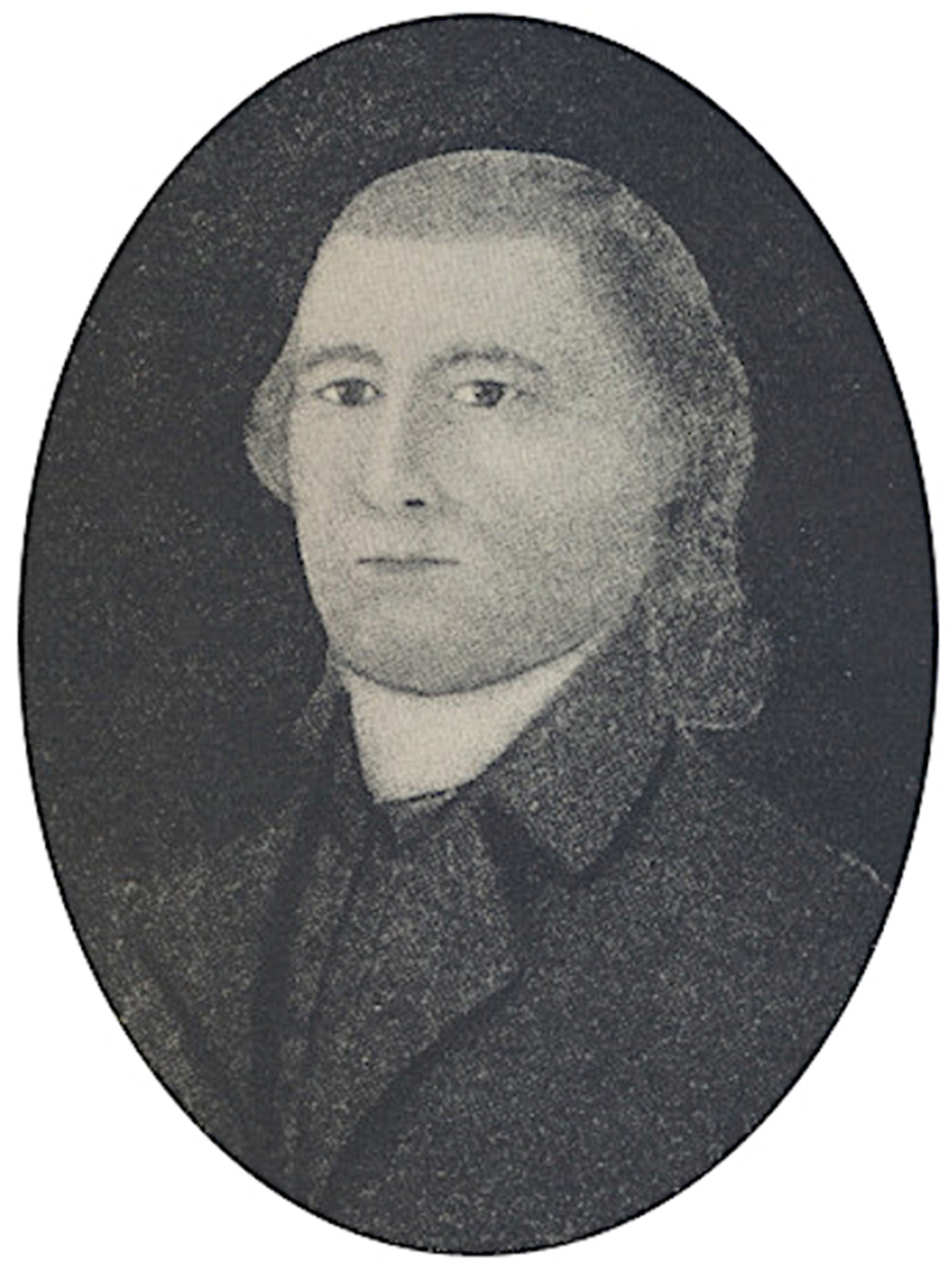
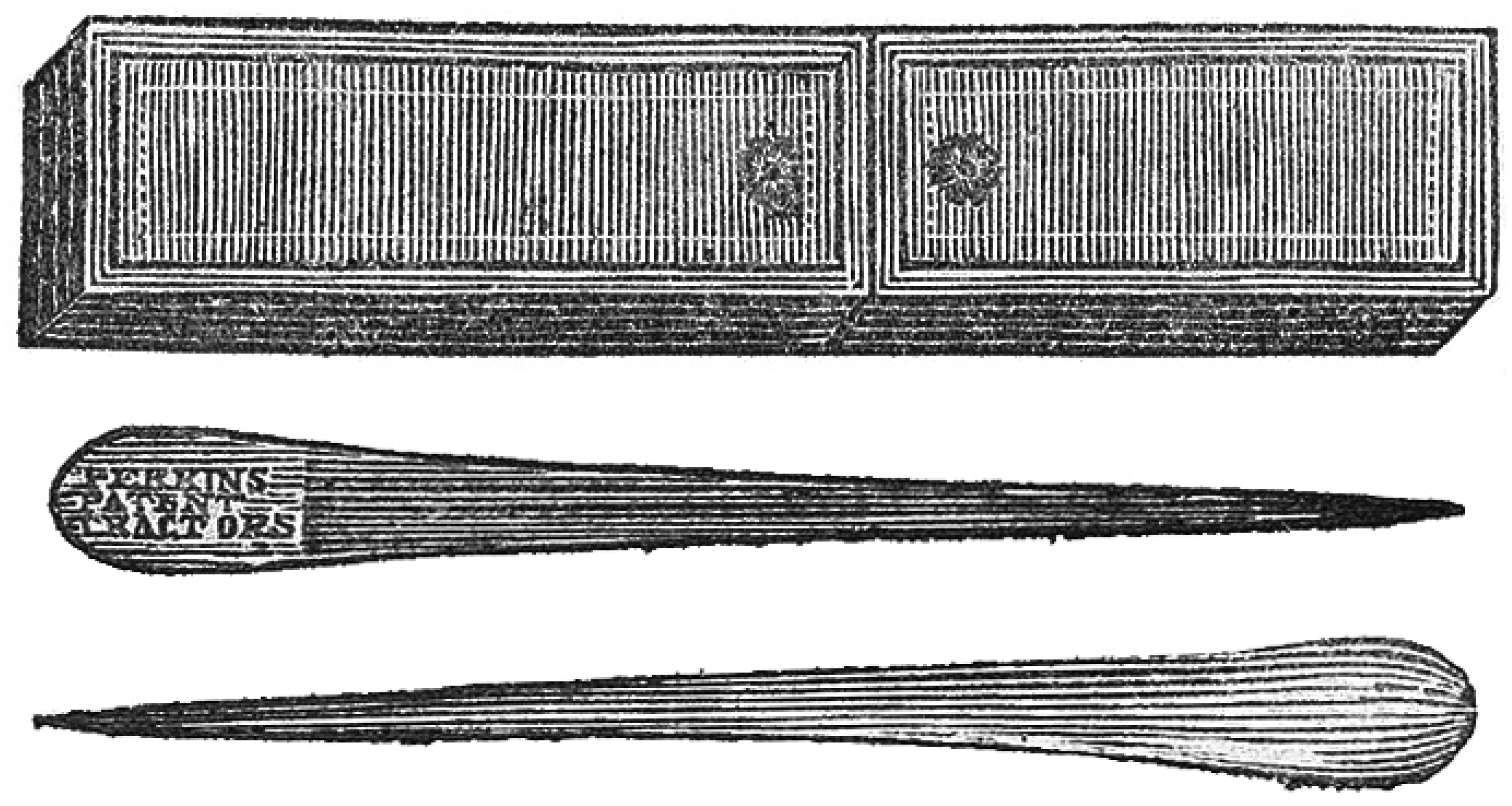

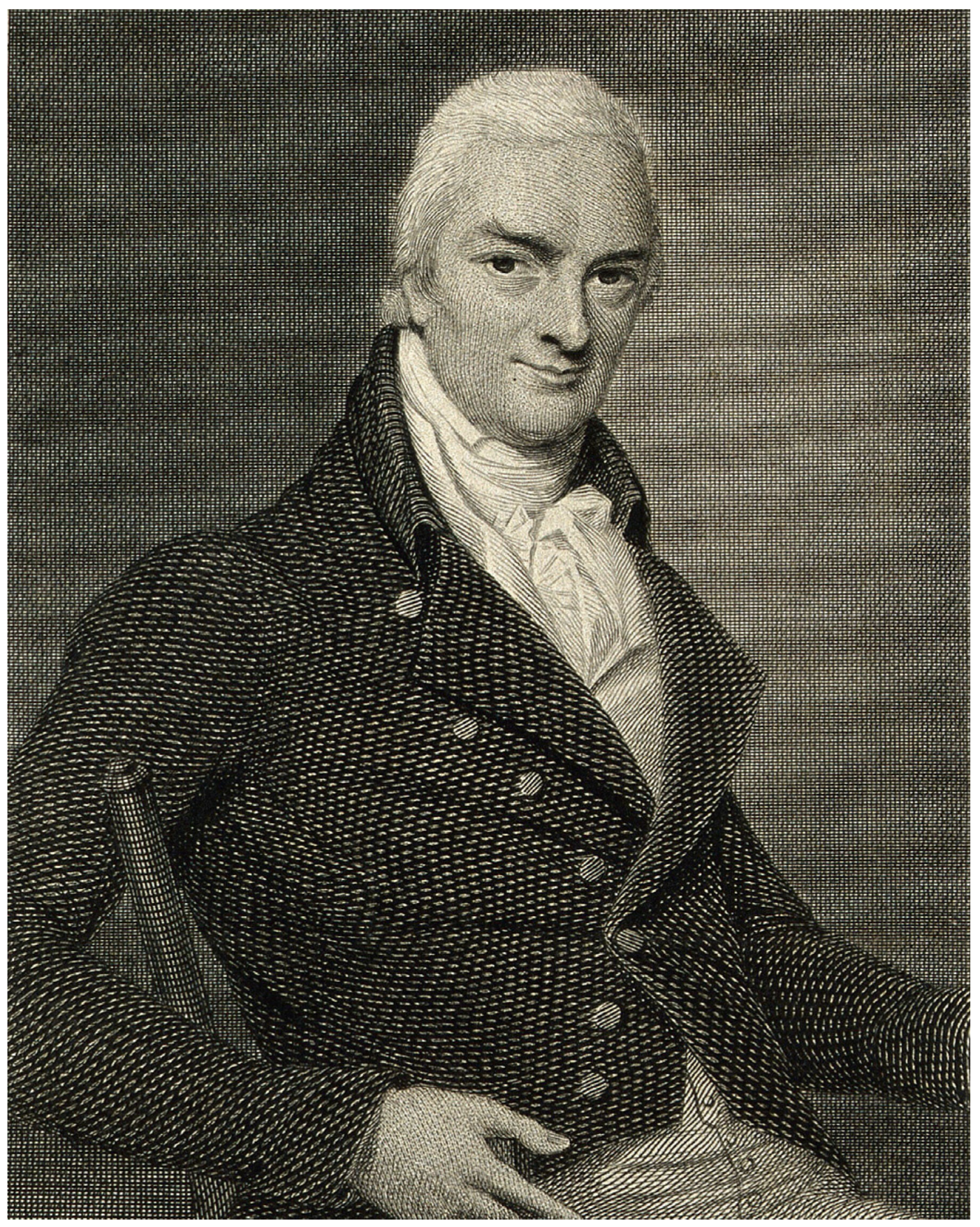
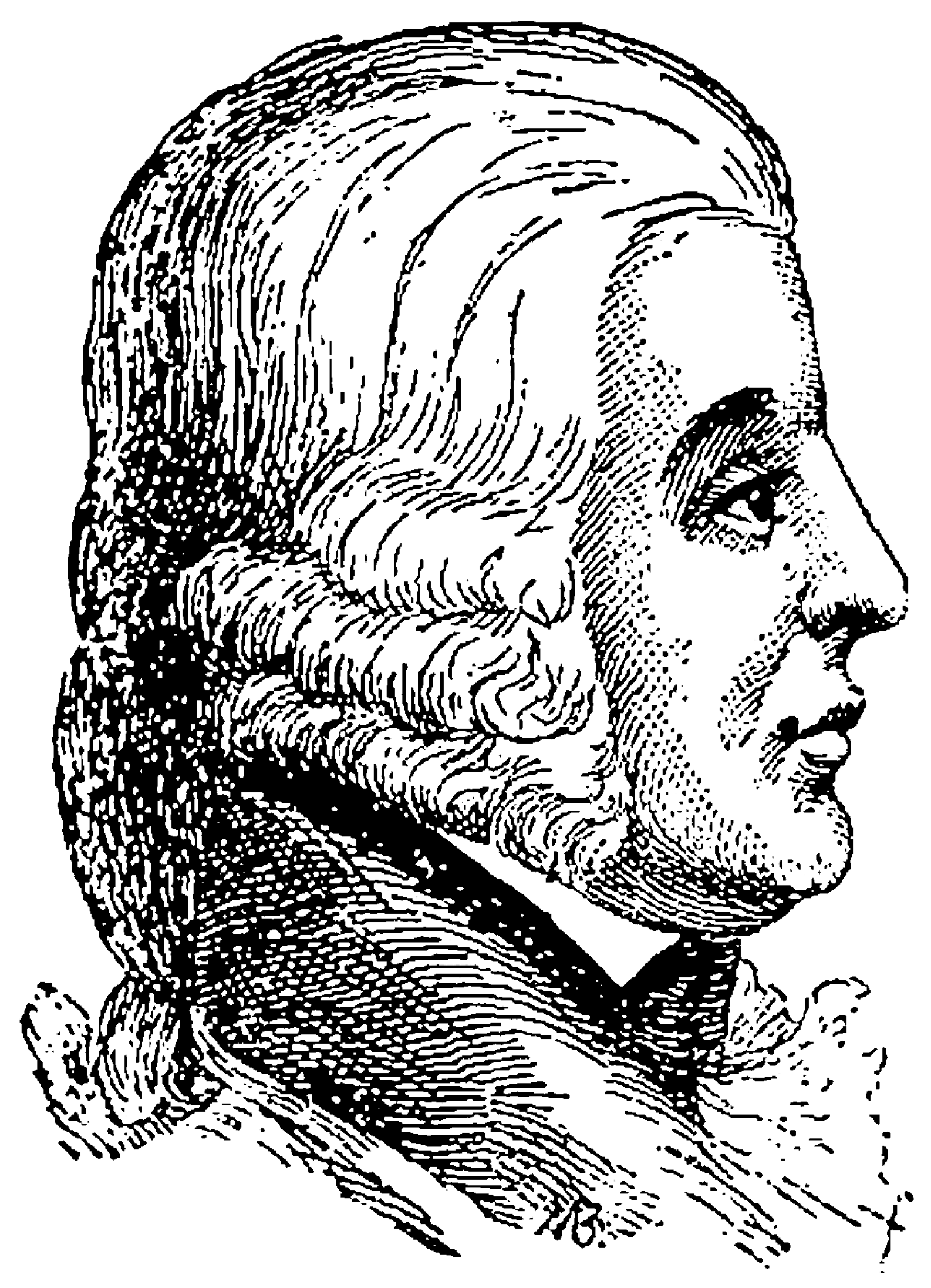
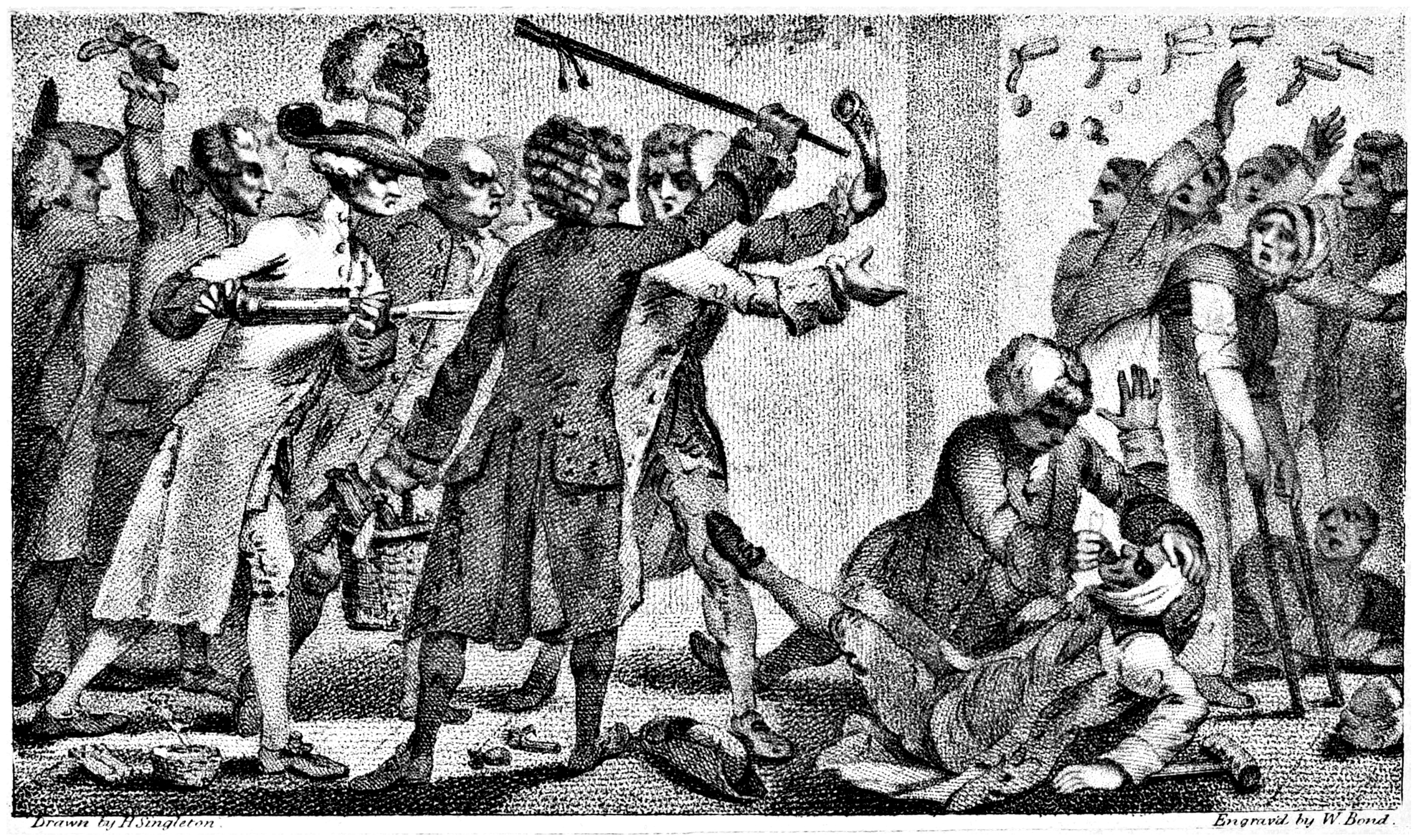
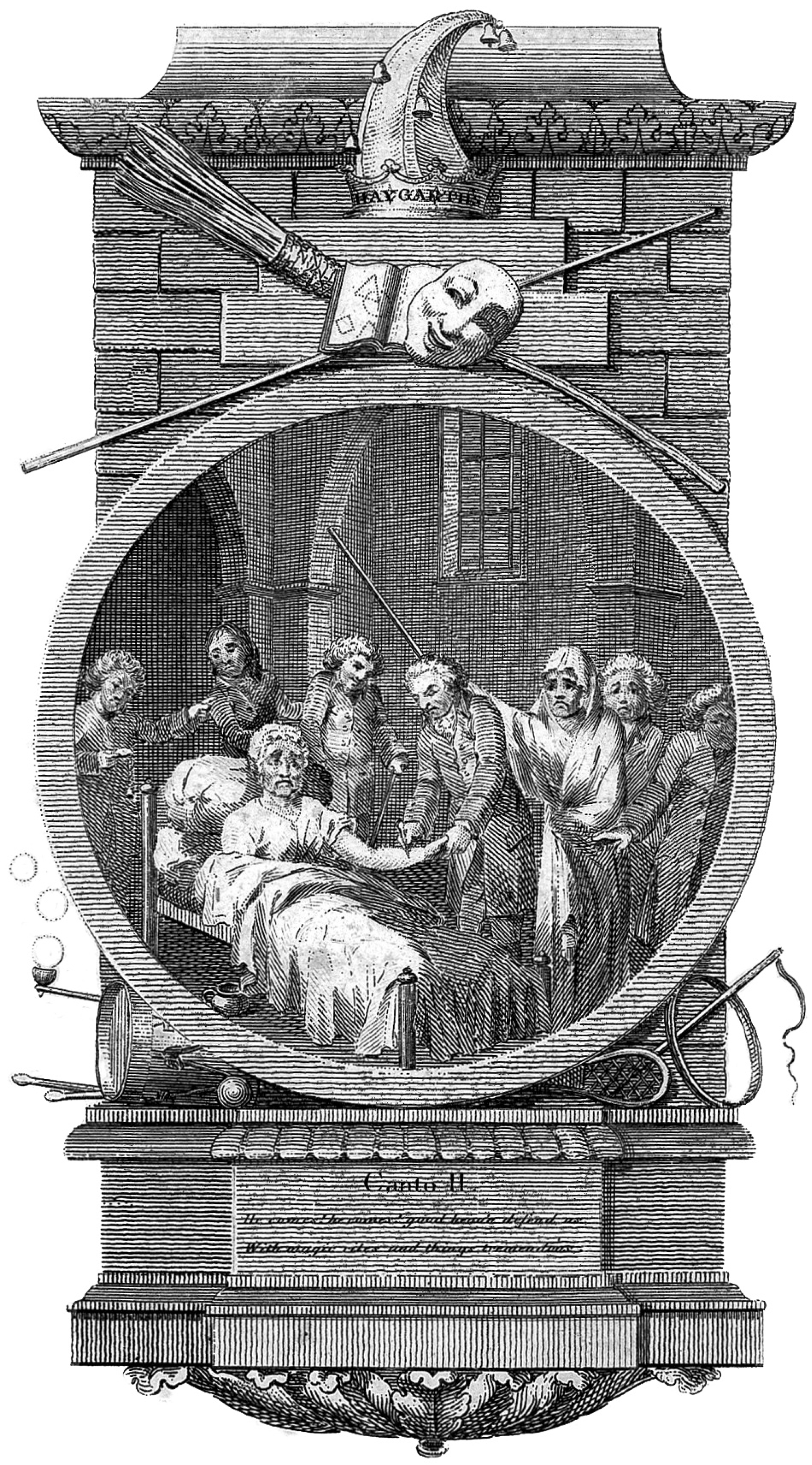
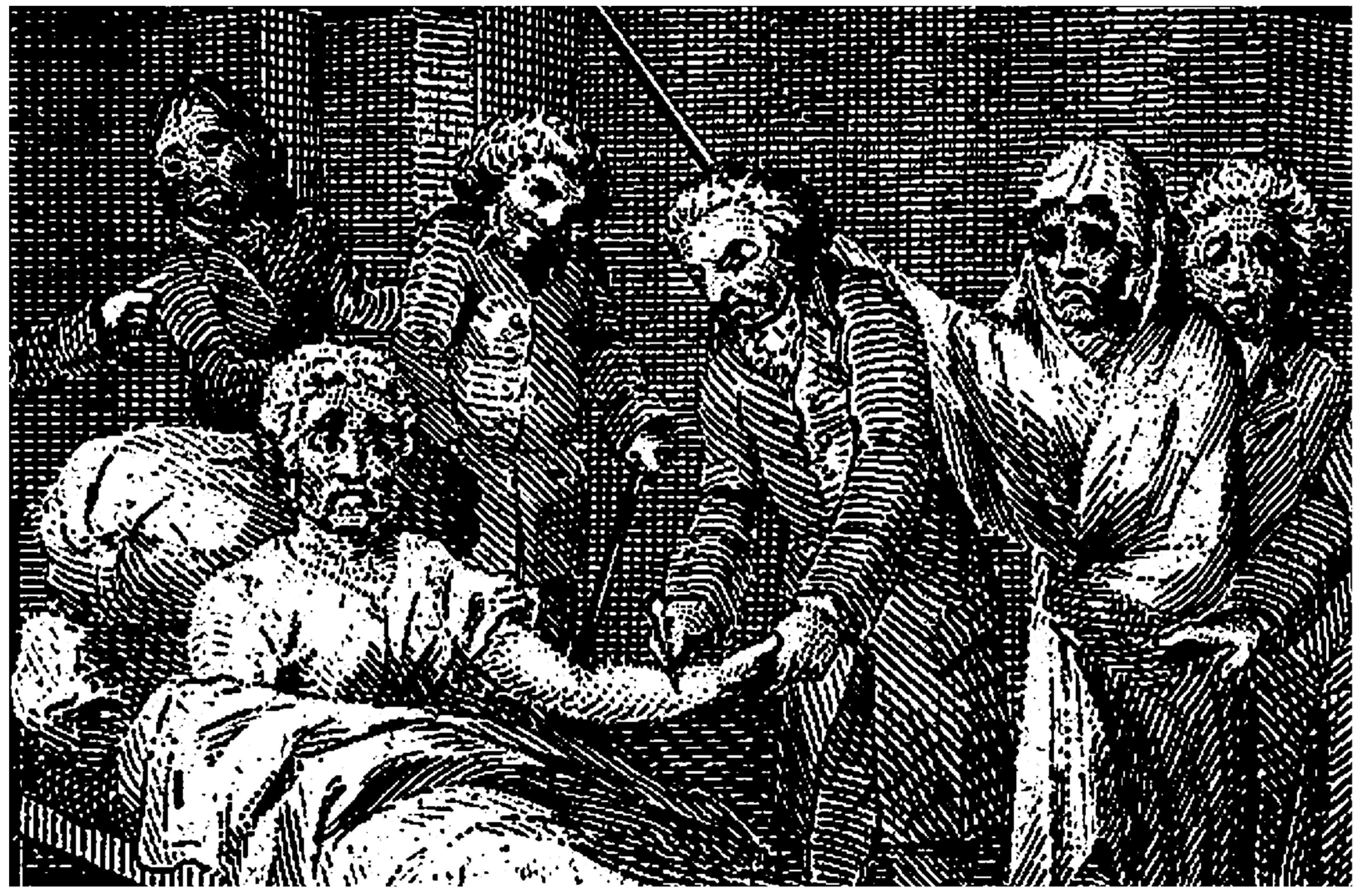
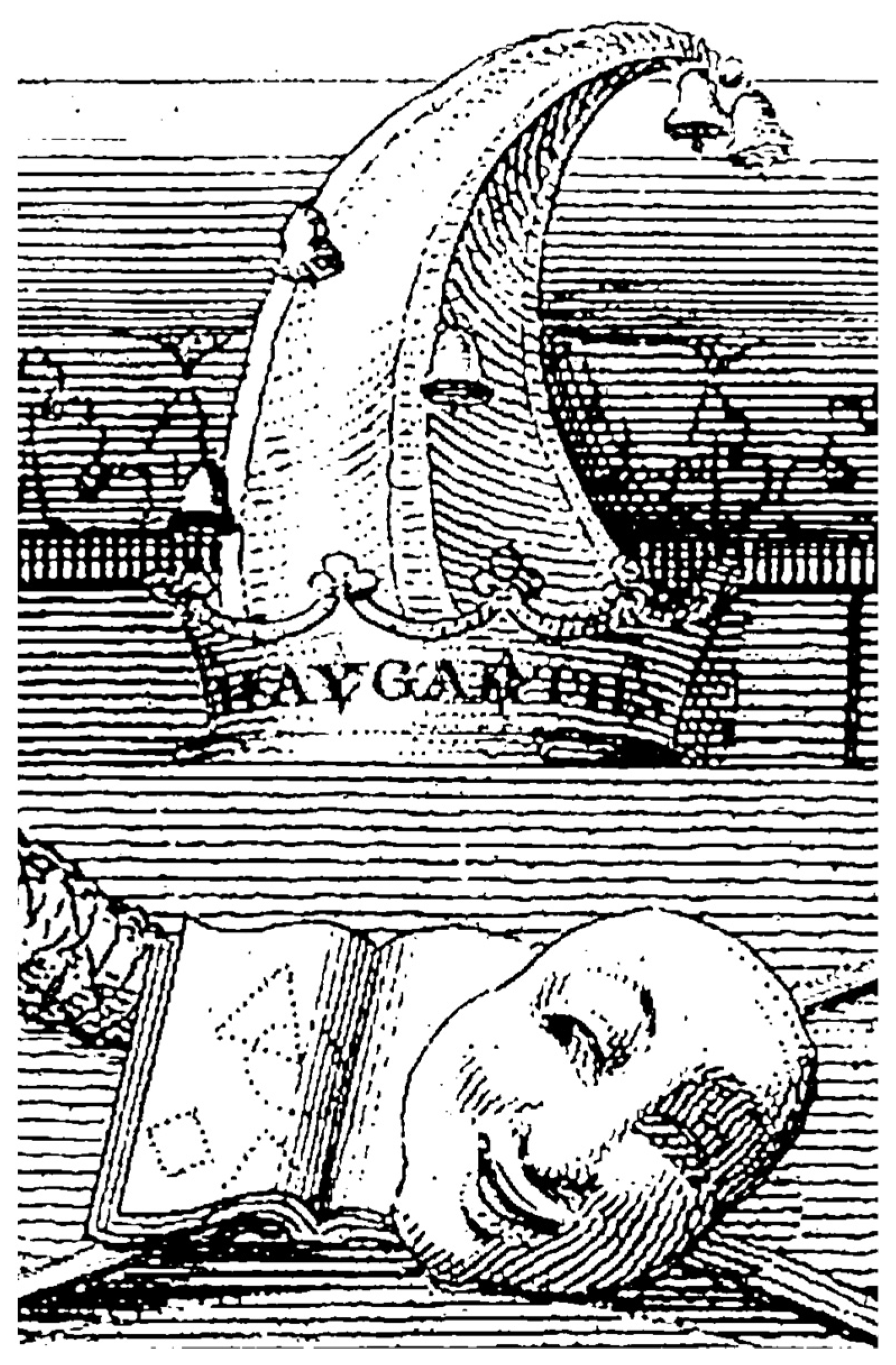
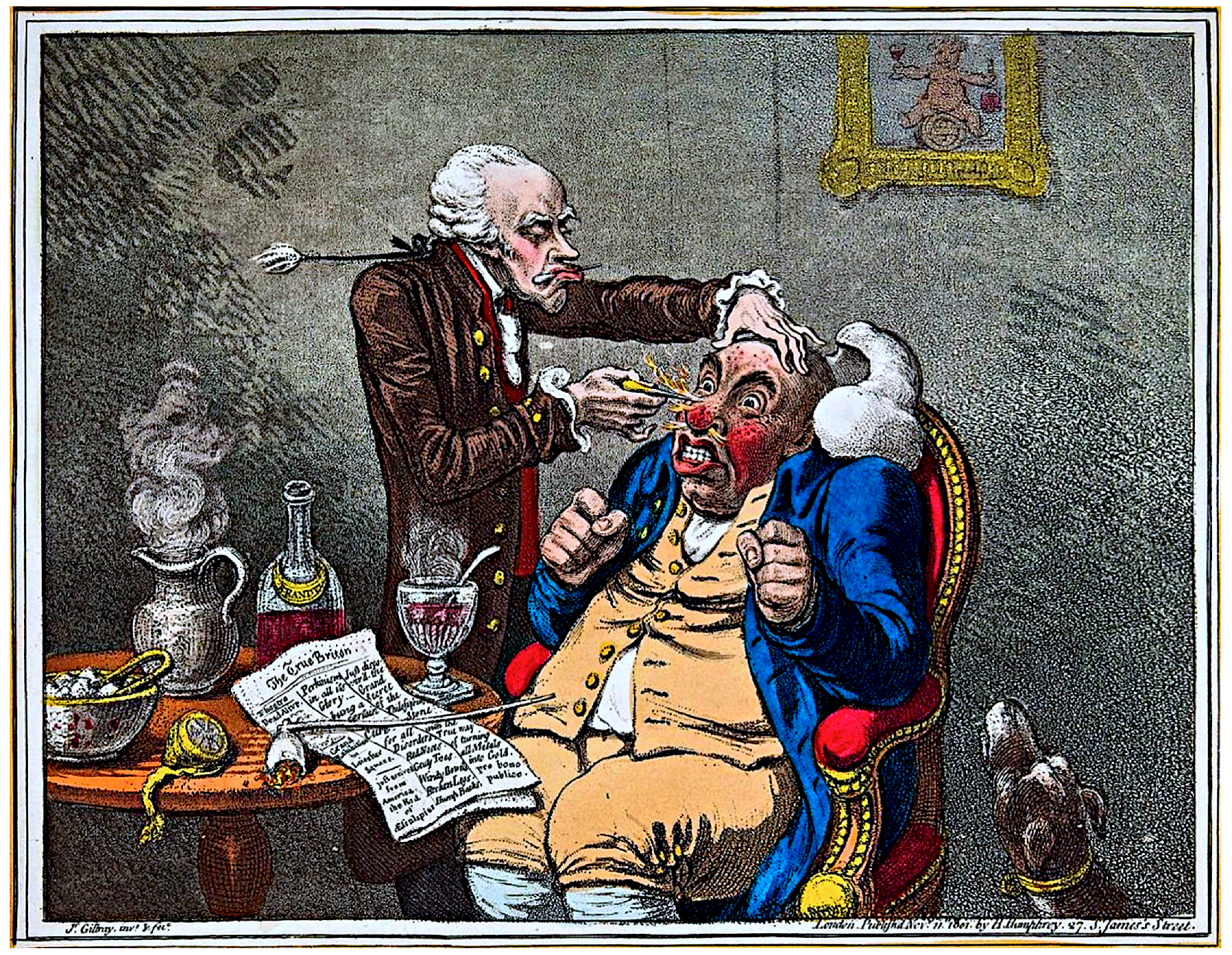
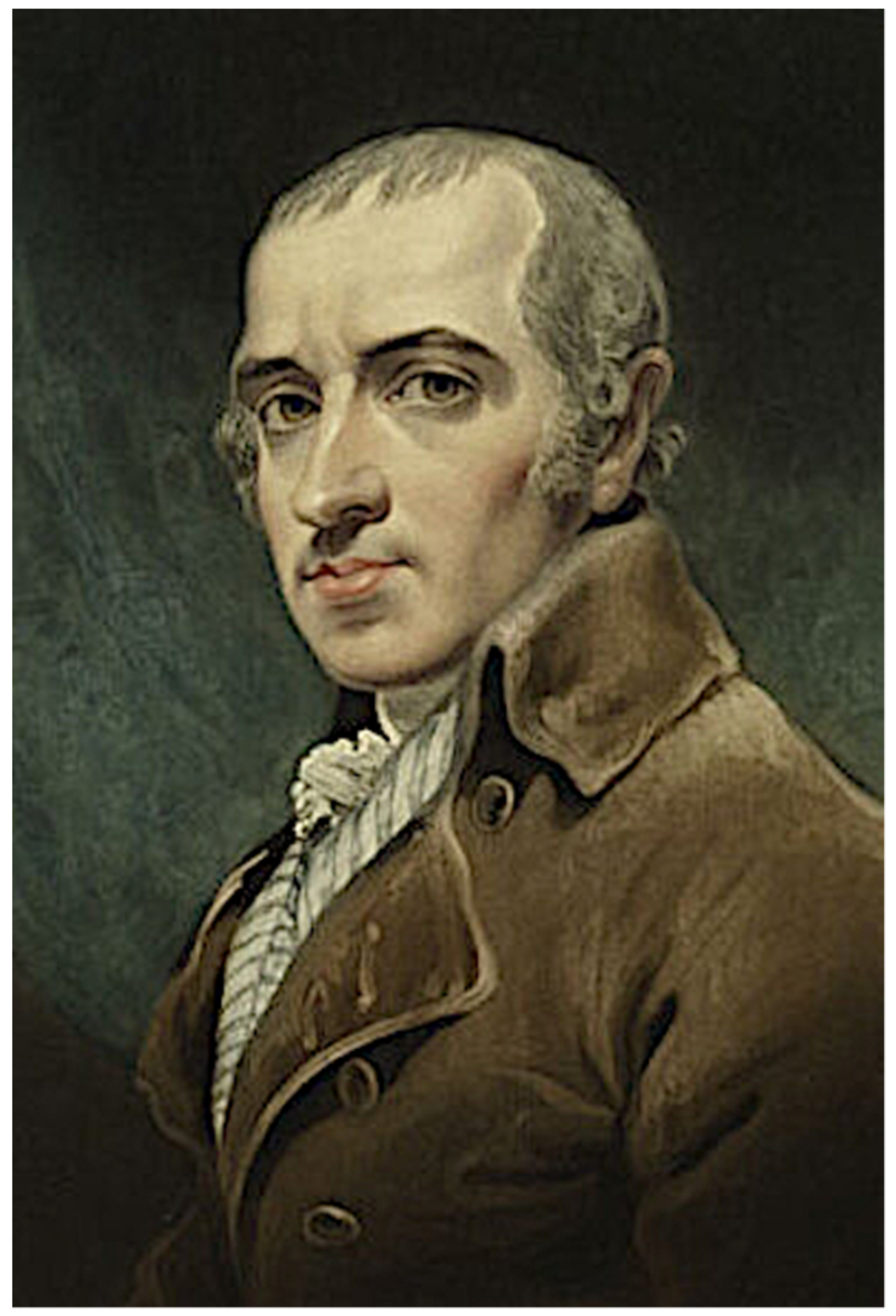
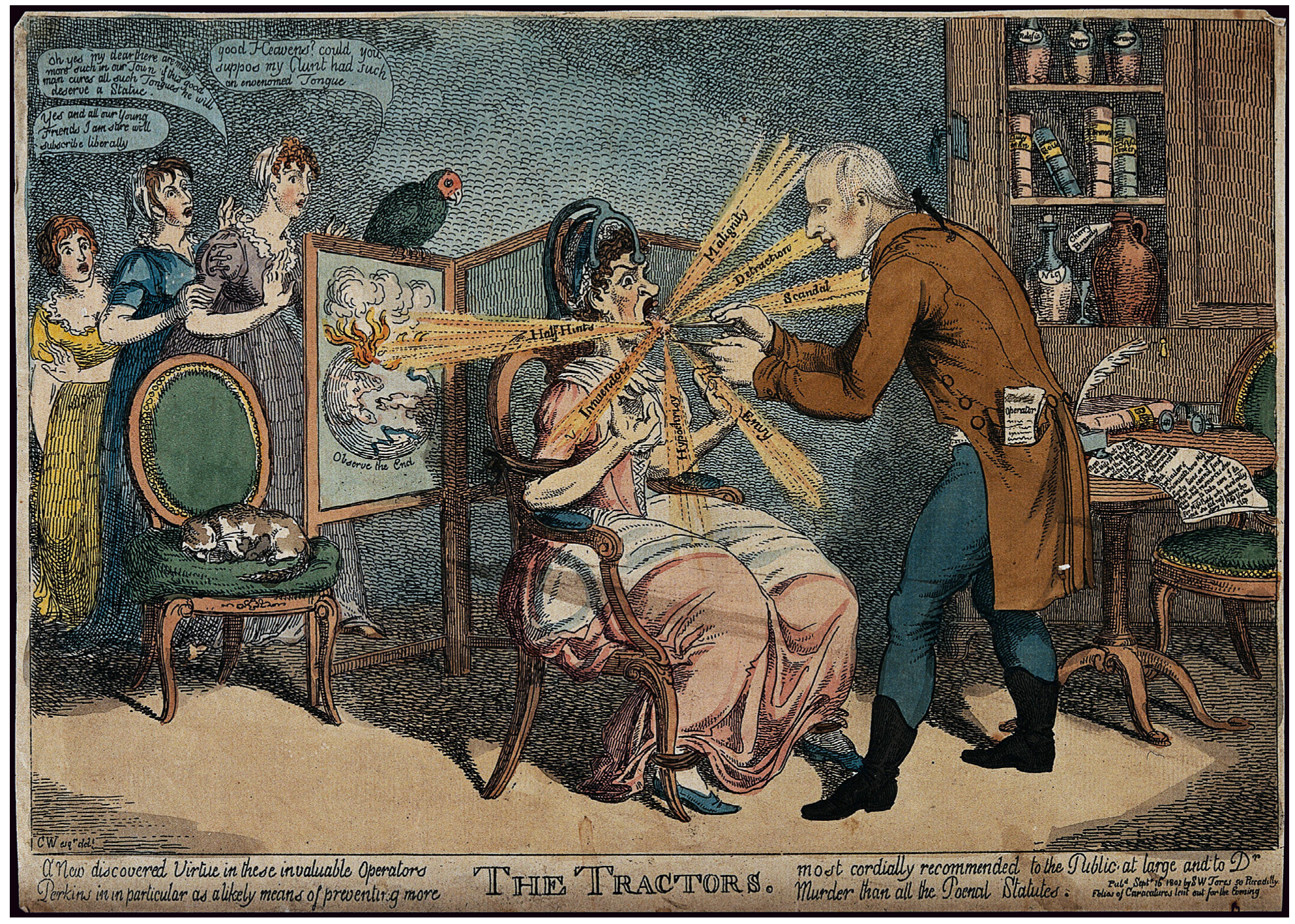
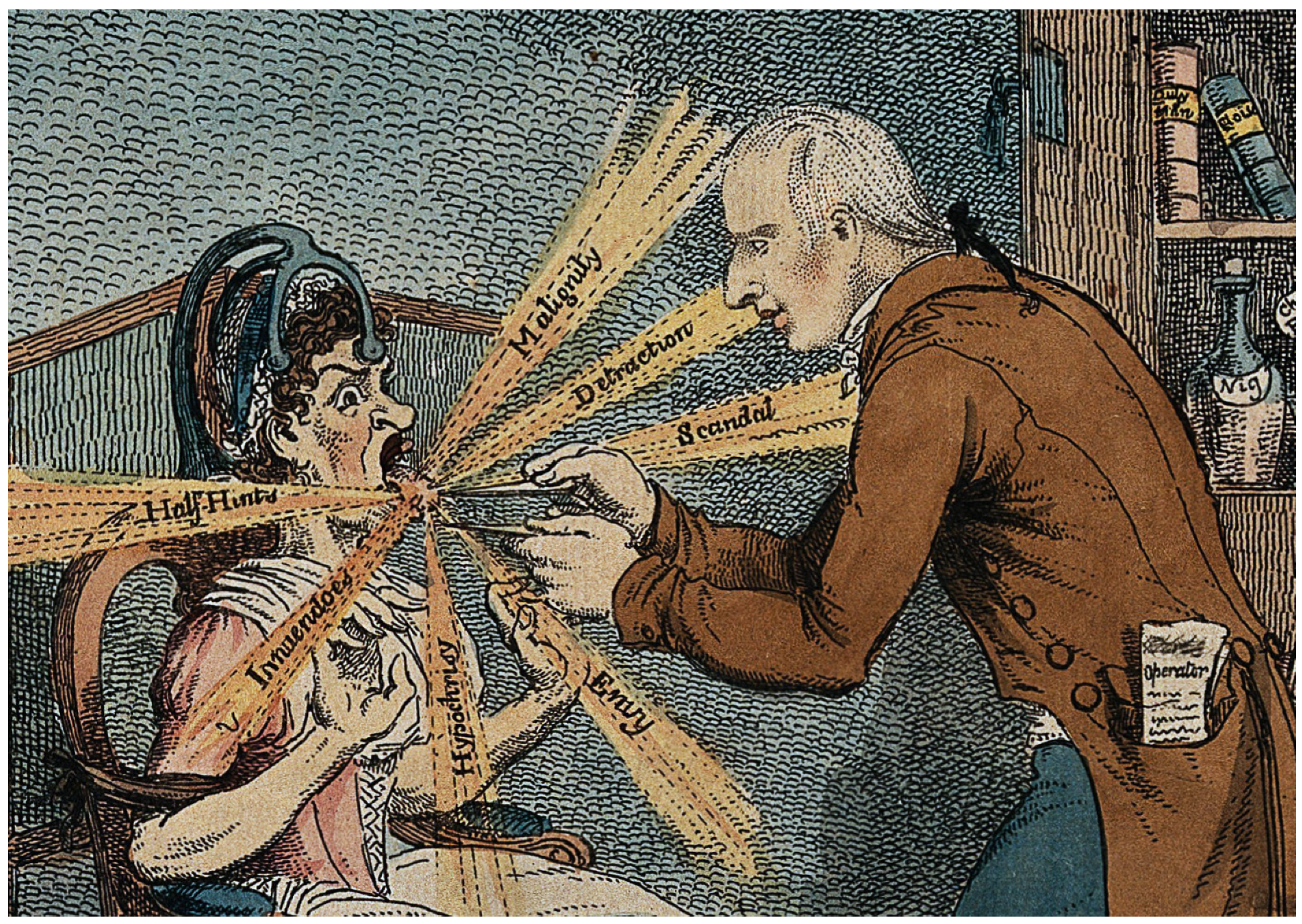
Disclaimer/Publisher’s Note: The statements, opinions and data contained in all publications are solely those of the individual author(s) and contributor(s) and not of MDPI and/or the editor(s). MDPI and/or the editor(s) disclaim responsibility for any injury to people or property resulting from any ideas, methods, instructions or products referred to in the content. |
© 2024 by the author. Licensee MDPI, Basel, Switzerland. This article is an open access article distributed under the terms and conditions of the Creative Commons Attribution (CC BY) license (https://creativecommons.org/licenses/by/4.0/).
Share and Cite
Lanska, D.J. Disinformation by Proponents of Perkins’ Patent “Metallick Tractors” (1798–1806) to Sway Public Opinion in Britain in Favor of a Fraudulent Therapy. Histories 2024, 4, 66-106. https://doi.org/10.3390/histories4010006
Lanska DJ. Disinformation by Proponents of Perkins’ Patent “Metallick Tractors” (1798–1806) to Sway Public Opinion in Britain in Favor of a Fraudulent Therapy. Histories. 2024; 4(1):66-106. https://doi.org/10.3390/histories4010006
Chicago/Turabian StyleLanska, Douglas J. 2024. "Disinformation by Proponents of Perkins’ Patent “Metallick Tractors” (1798–1806) to Sway Public Opinion in Britain in Favor of a Fraudulent Therapy" Histories 4, no. 1: 66-106. https://doi.org/10.3390/histories4010006
APA StyleLanska, D. J. (2024). Disinformation by Proponents of Perkins’ Patent “Metallick Tractors” (1798–1806) to Sway Public Opinion in Britain in Favor of a Fraudulent Therapy. Histories, 4(1), 66-106. https://doi.org/10.3390/histories4010006




